Chemistry and Chemists № 3 2025
Journal of Chemists-Enthusiasts
| Content | Chemistry experiments - video | Physics experiments - video | Home Page - Chemistry and Chemists |
|
Chemistry and Chemists № 3 2025 Journal of Chemists-Enthusiasts |
Experiments with Phenol - pt.4, 5 Chemist |
|
Having noticed a mistake in the text, allocate it and press Ctrl-Enter
Phenol-Iron Complex, Hydrochloric Acid, and Sodium Hydroxide - Part 4
Since the phenol-iron complex left in air had oxidized, it had to be prepared anew. I added 0.53 g of phenol to 900 mL of distilled water and stirred the mixture. The solution gradually turned purple.
Комплекс фенола с железом, соляная кислота и гидроксид натрия - Часть 4 Next, I added 10 mL of 13.5 % hydrochloric acid to the beaker. The bottom layer of the solution became colorless. After stirring, the entire solution turned colorless - the complex had been destroyed. I then added several granules of caustic soda and stirred. The solution turned brown. Upon adding excess sodium hydroxide and swirling vigorously, the liquid became turbid and lost its transparency. After about half a minute, brown flakes formed and slowly settled to the bottom. In similar experiments, black tea tannins behaved in the same way as phenol [1]. __________________________________________________ 1 See the article - Would You Like More Tea? Black Tea and Iron Chlorides [link]. |
|
Комплекс фенола с железом, соляная кислота и гидроксид натрия - Часть 4
Поскольку оставленный на воздухе комплекс фенола с железом окислился, его было необходимо получить заново - 0.53 г фенола добавил в 900 мл дистиллированной воды, перемешал. Раствор постепенно окрасился в фиолетовый цвет.
Добавил в стакан 10 мл 13.5% соляной кислоты. Раствор снизу обесцветился. Перемешал содержимое стакана. Весь раствор стал бесцветным - комплекс разрушился. Добавил в стакан несколько гранул едкого натра, перемешал. Раствор стал коричневым. Добавил избыток гидроксида натрия, интенсивно перемешал жидкость. Раствор стал мутным, потеряв прозрачность. Через полминуты образовались бурые хлопья, которые постепенно оседали на дно. В аналогичных экспериментах танины черного чая вели себя подобно фенолу [1]. |
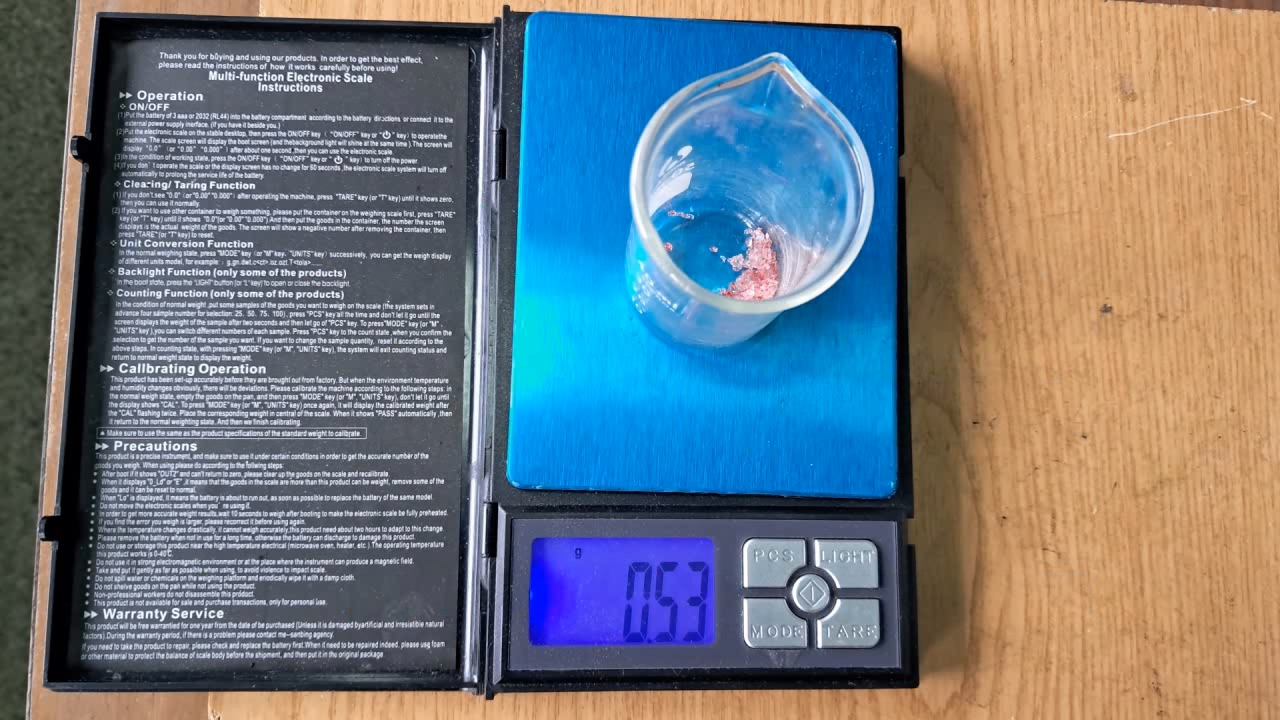
Phenol-Iron Complex, Hydrochloric Acid, and Sodium Hydroxide |
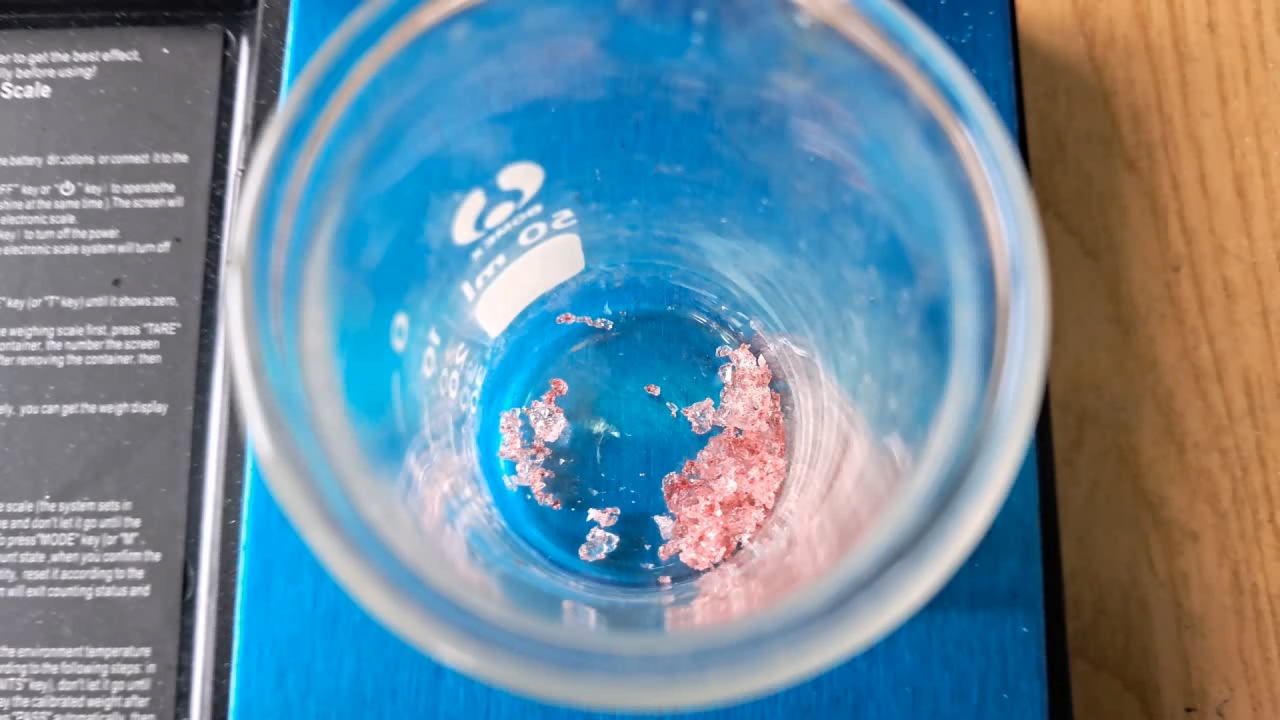
|
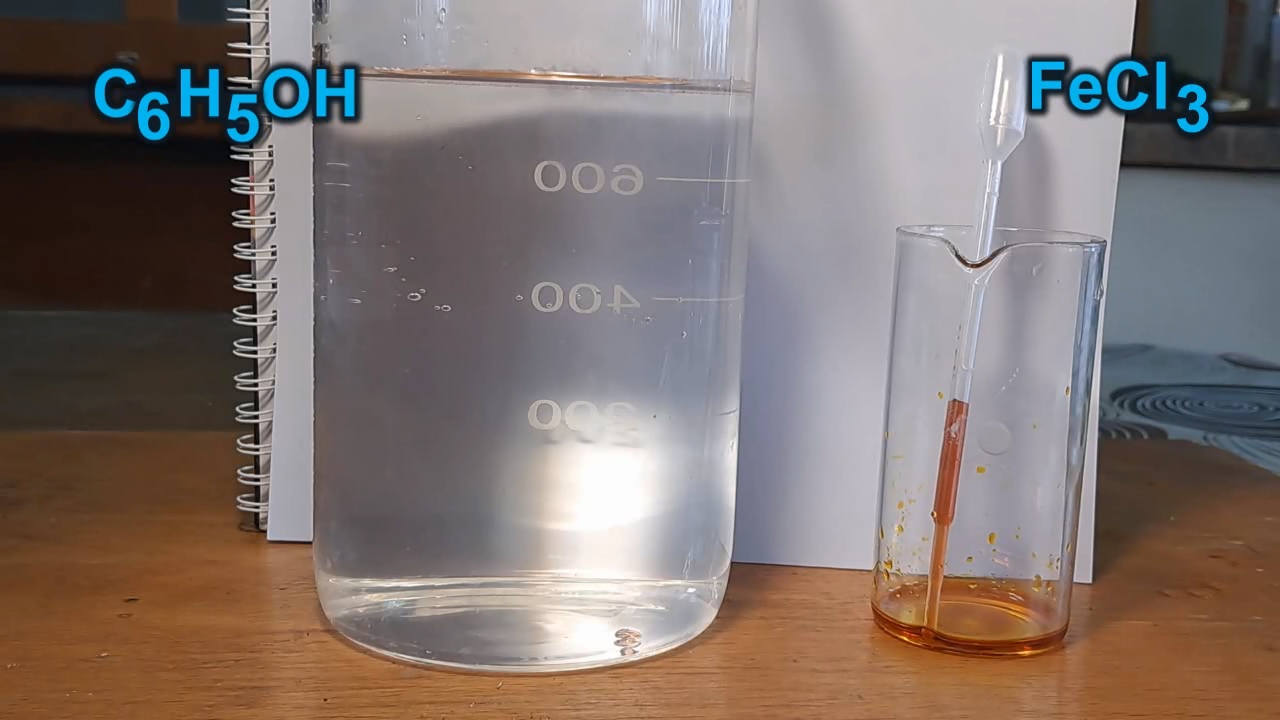
|
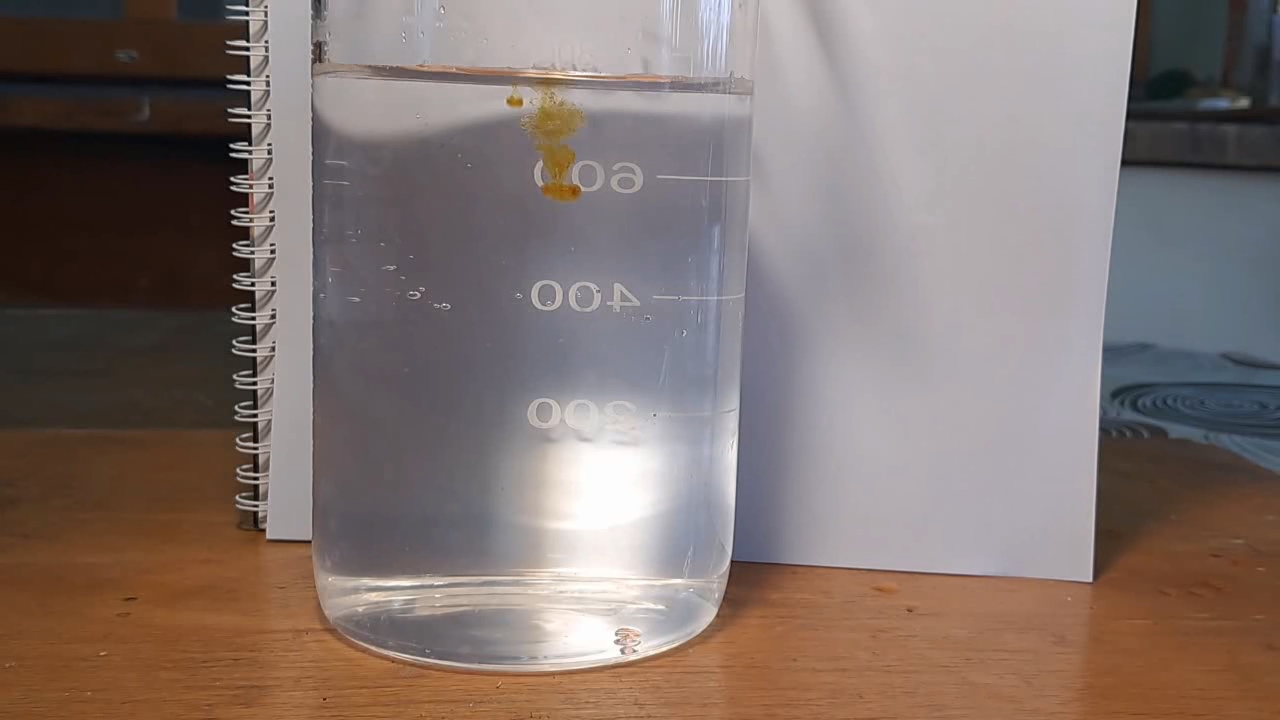
|
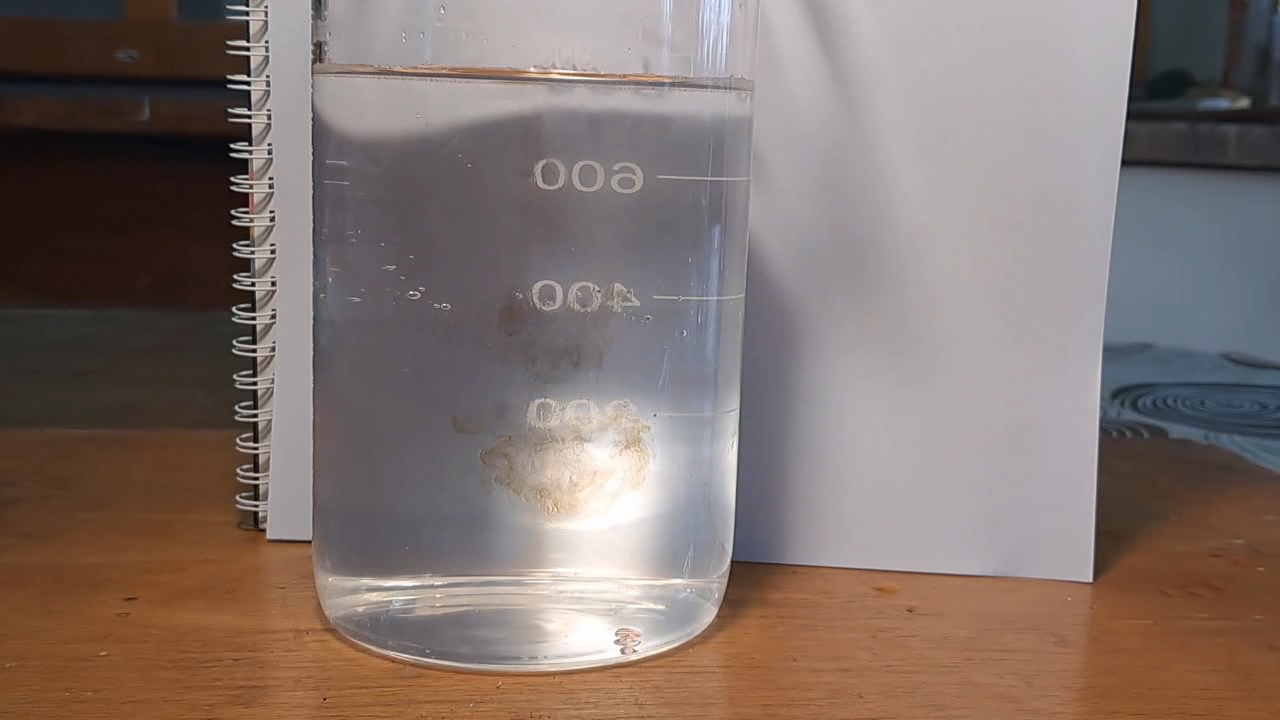
|
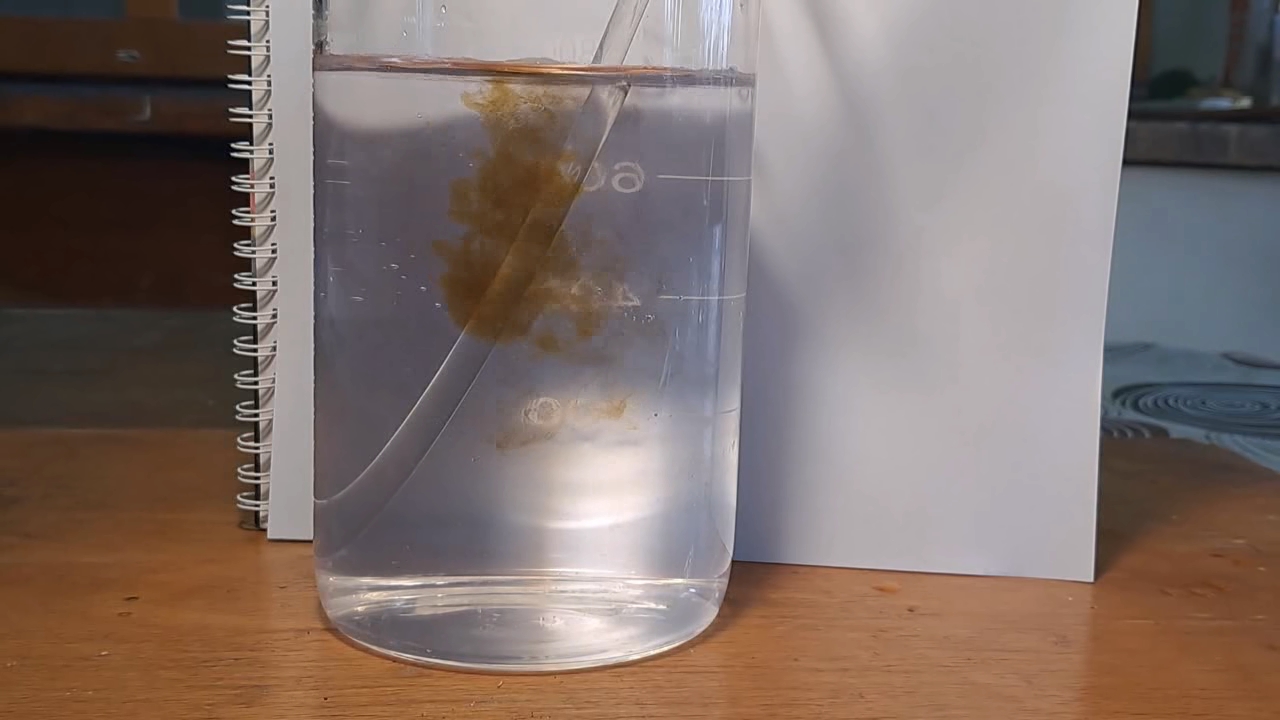
|
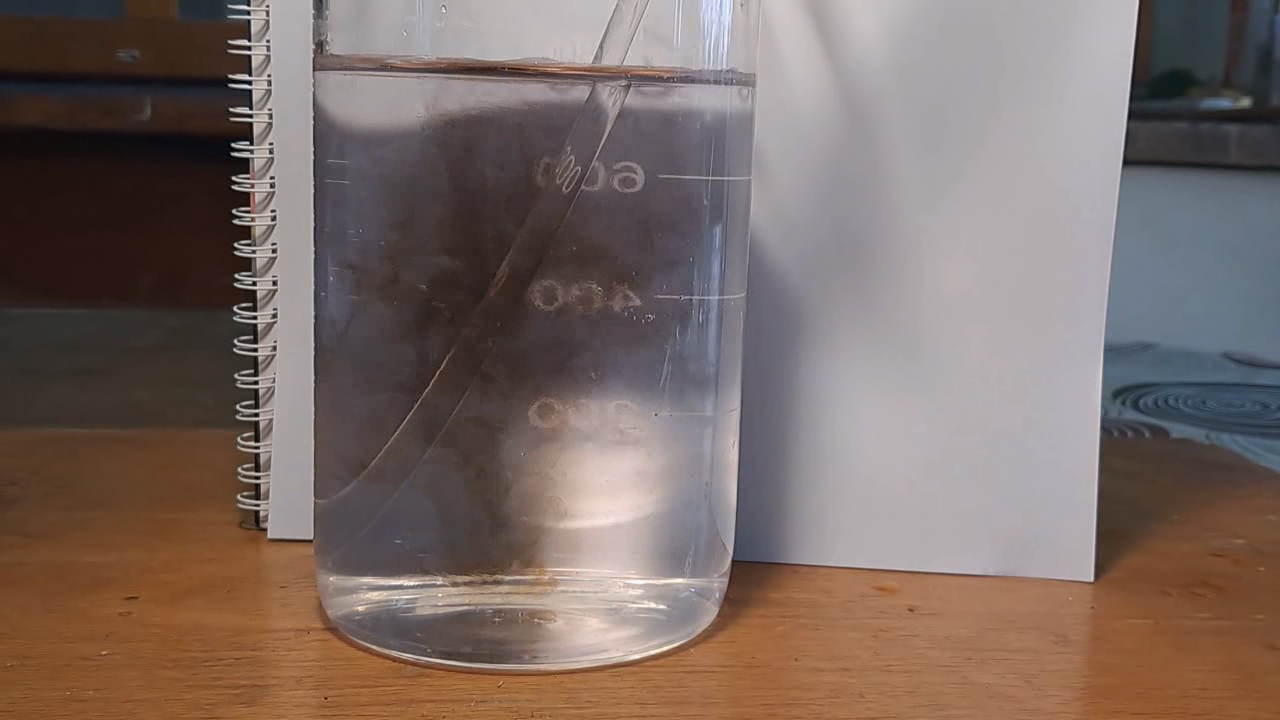
|
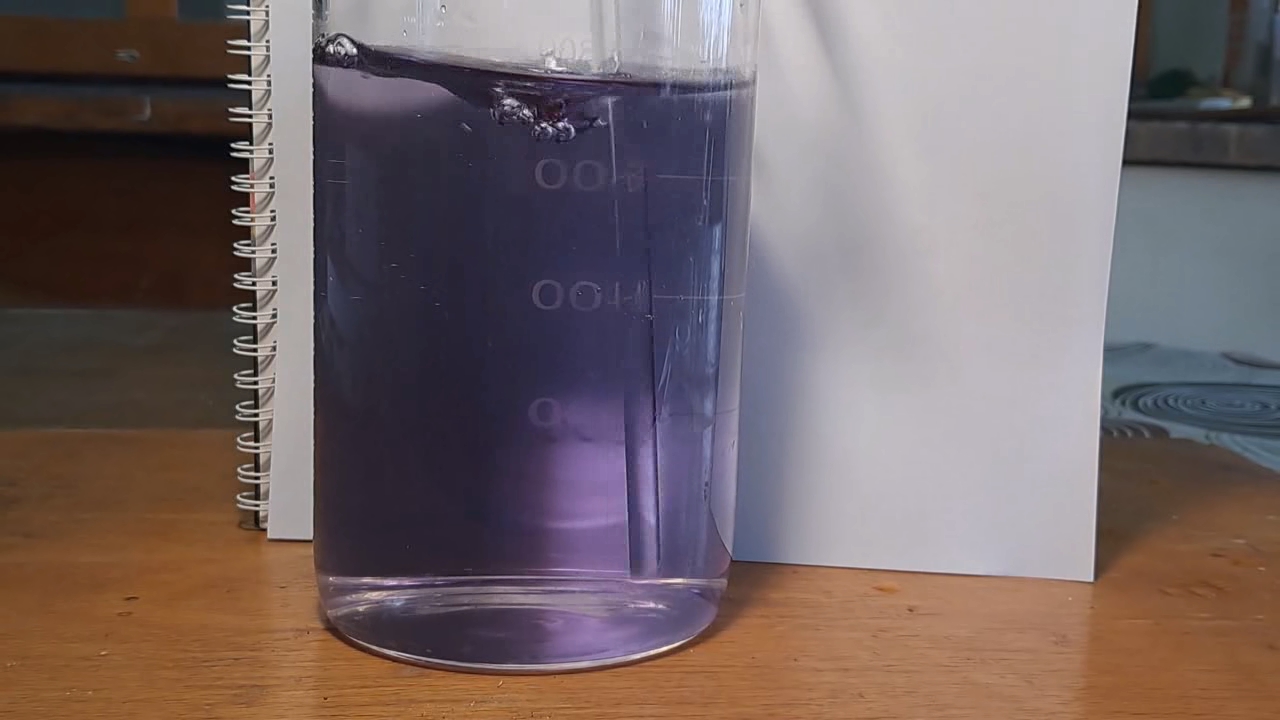
|
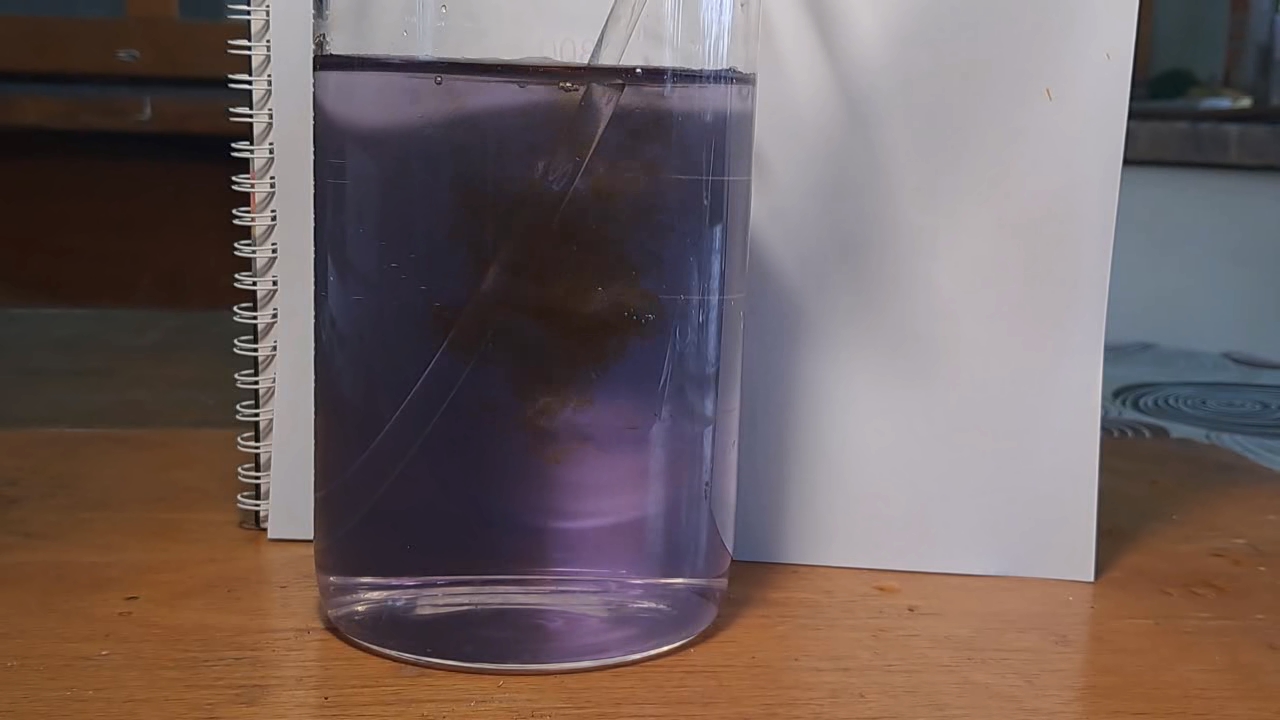
|
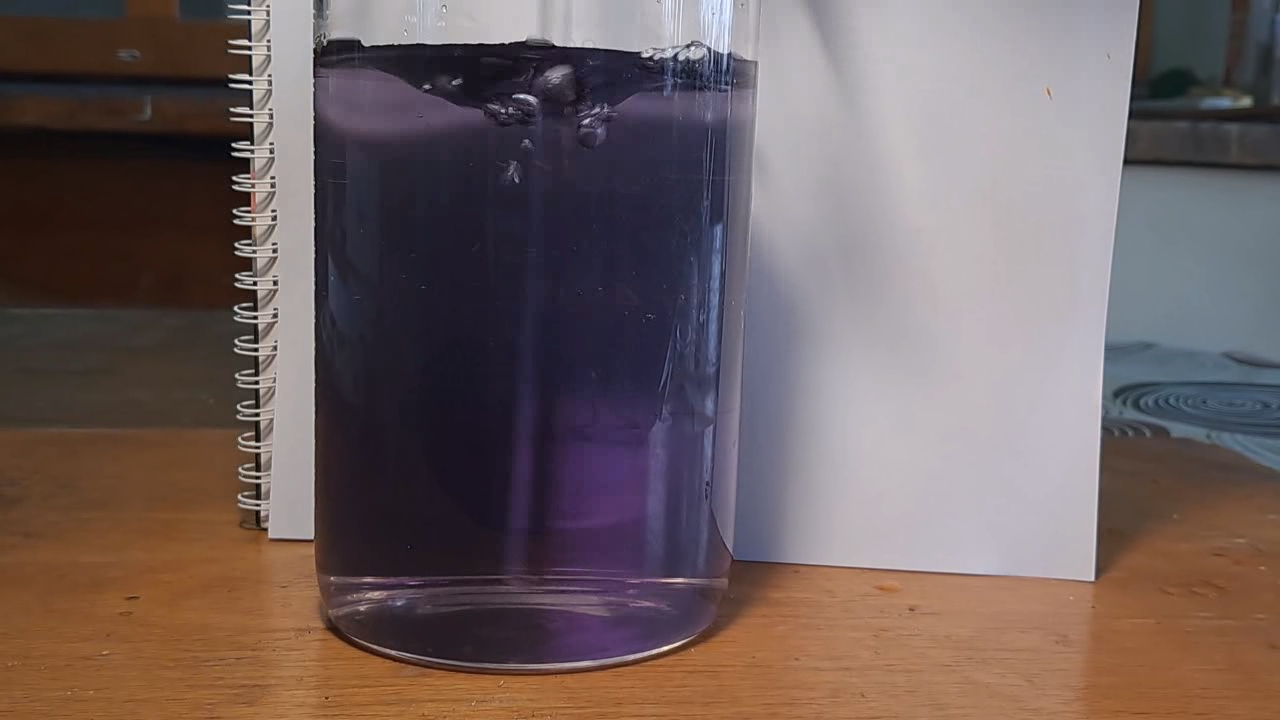
|
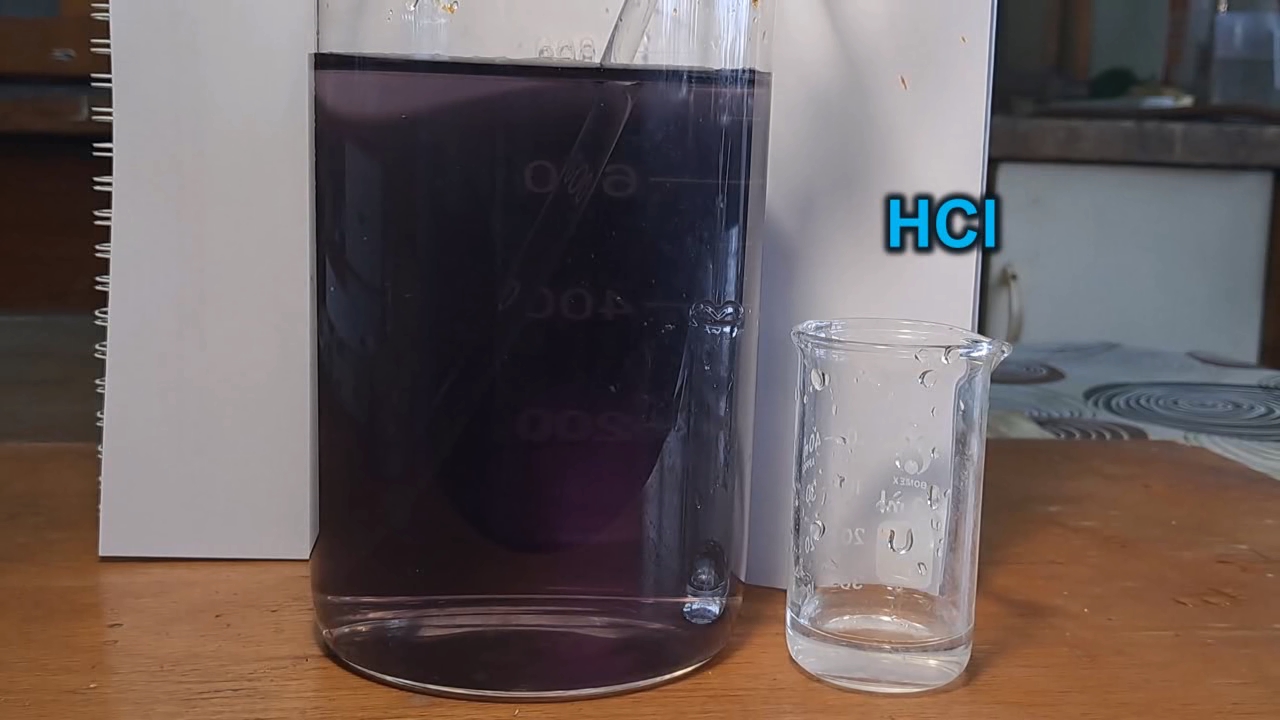
|
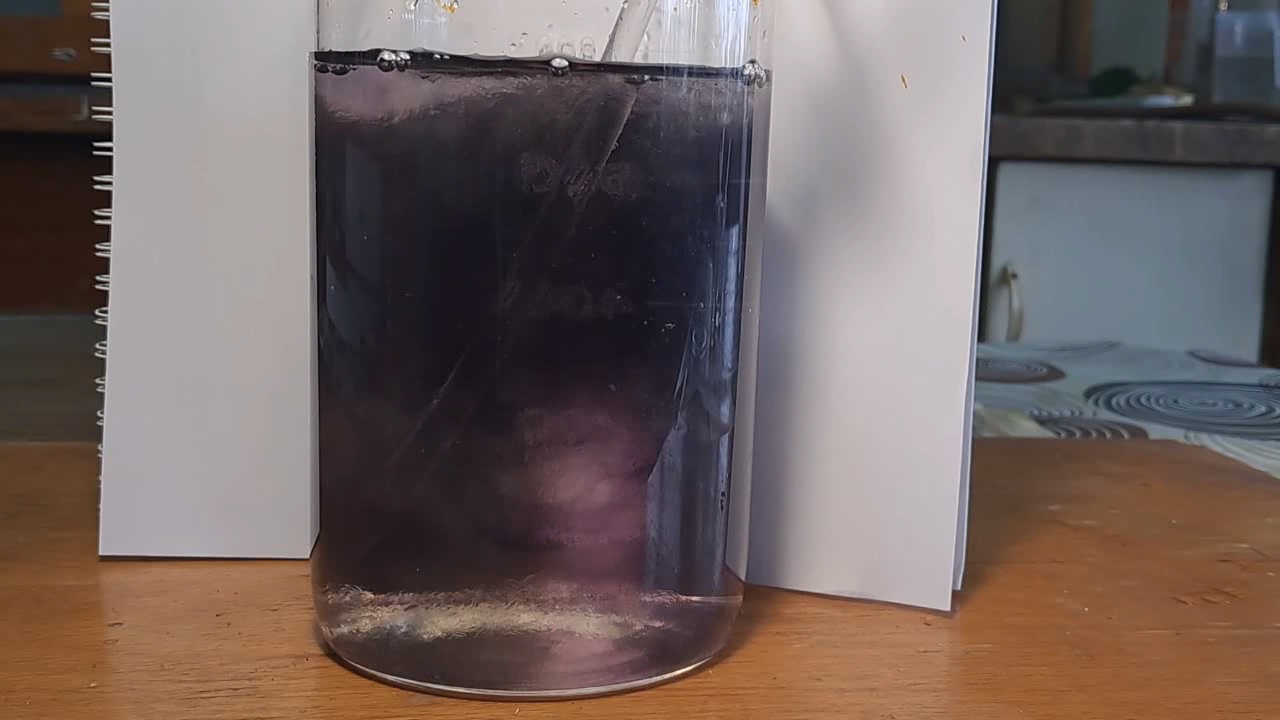
|
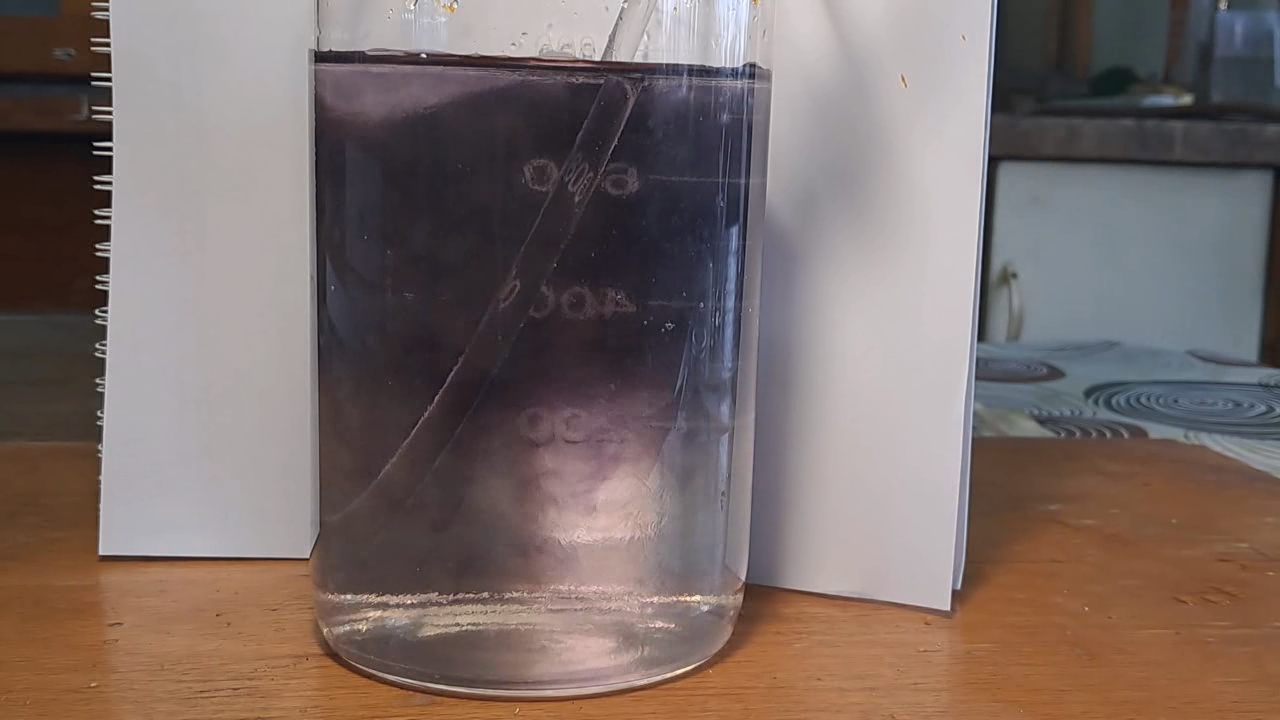
|
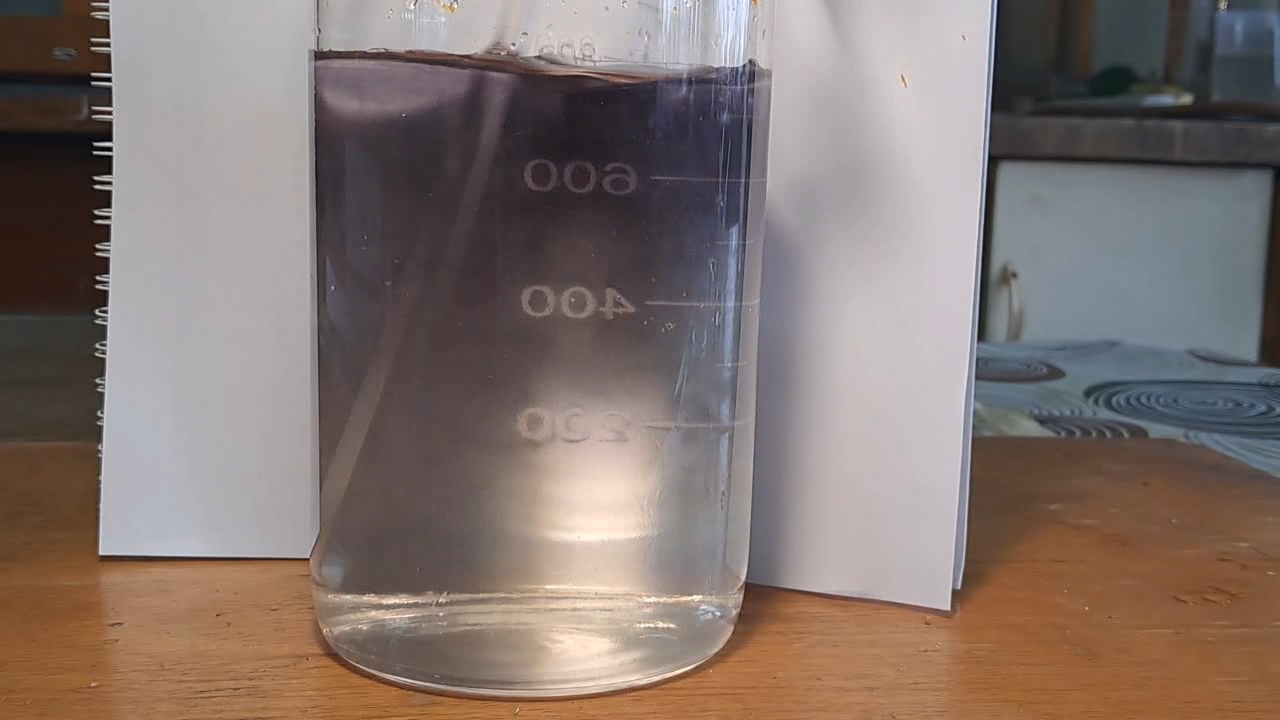
|
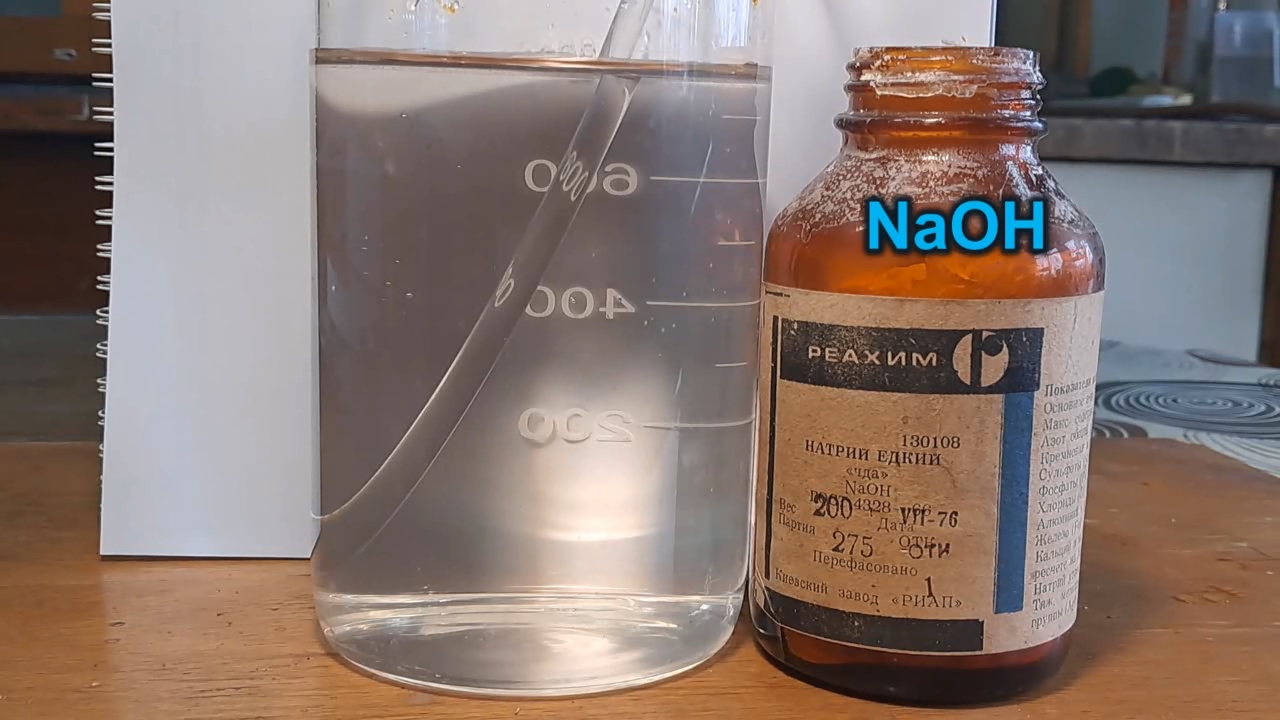
|
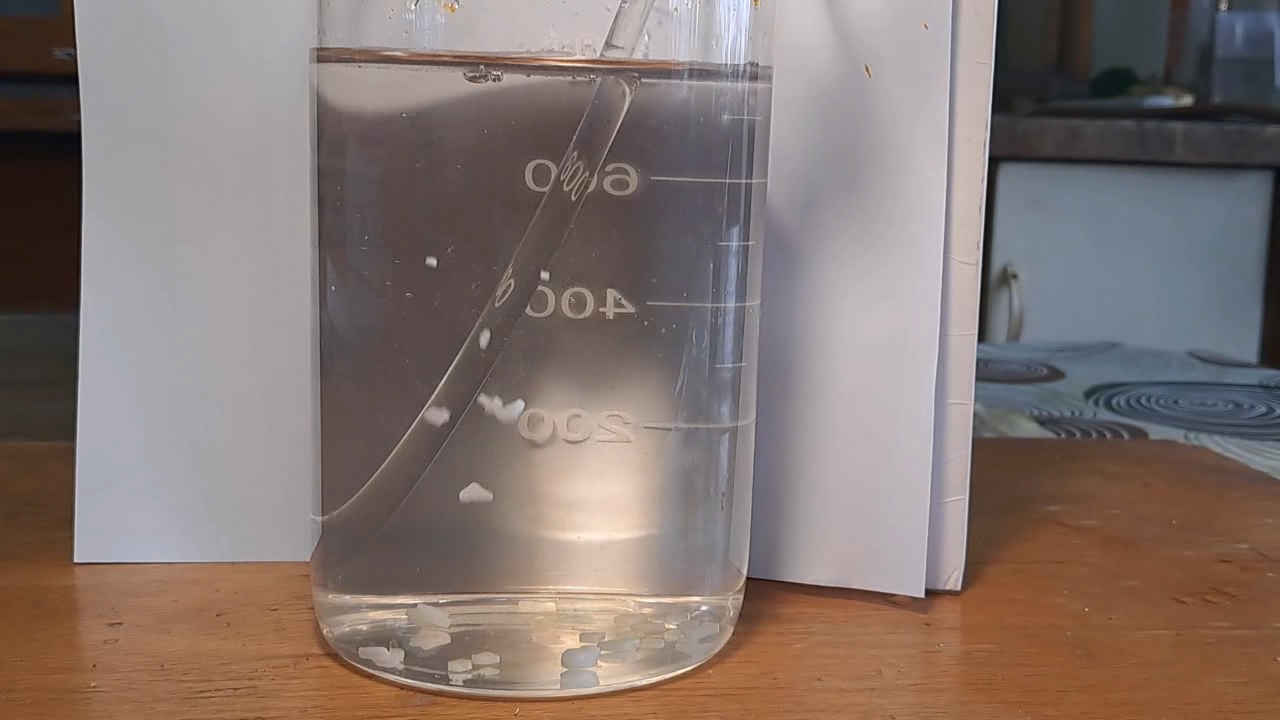
|
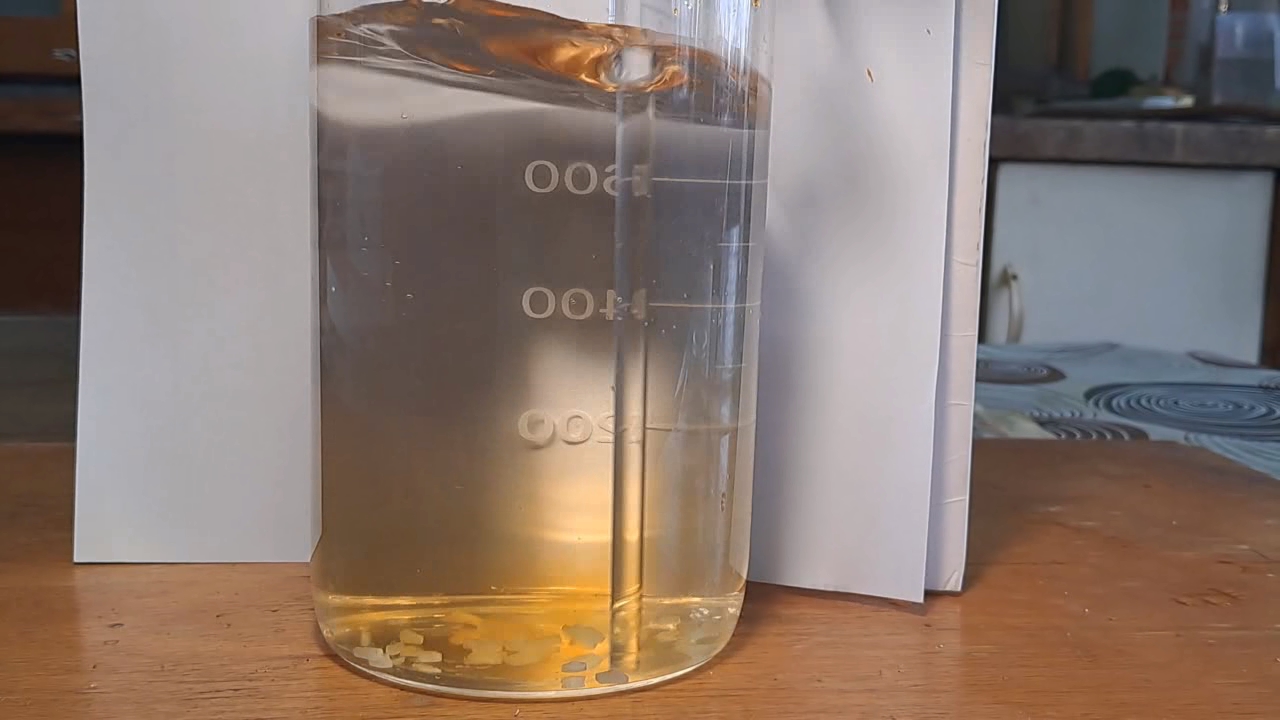
|
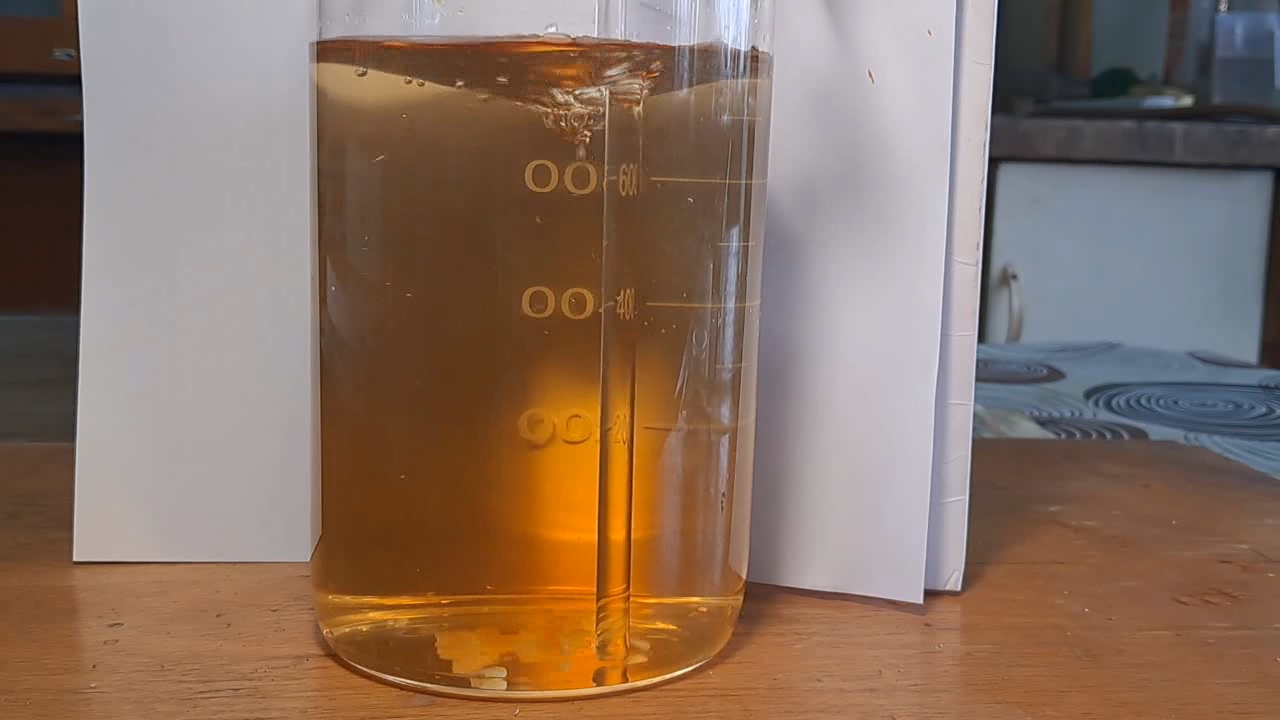
|
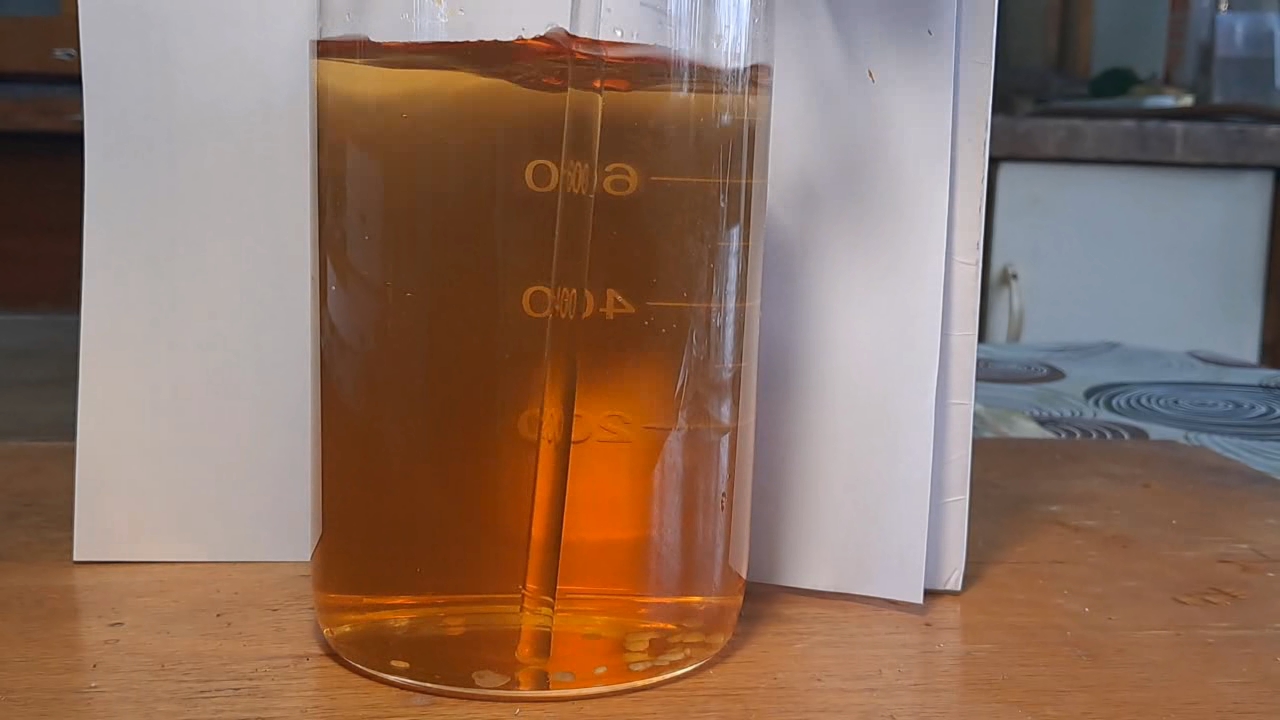
|
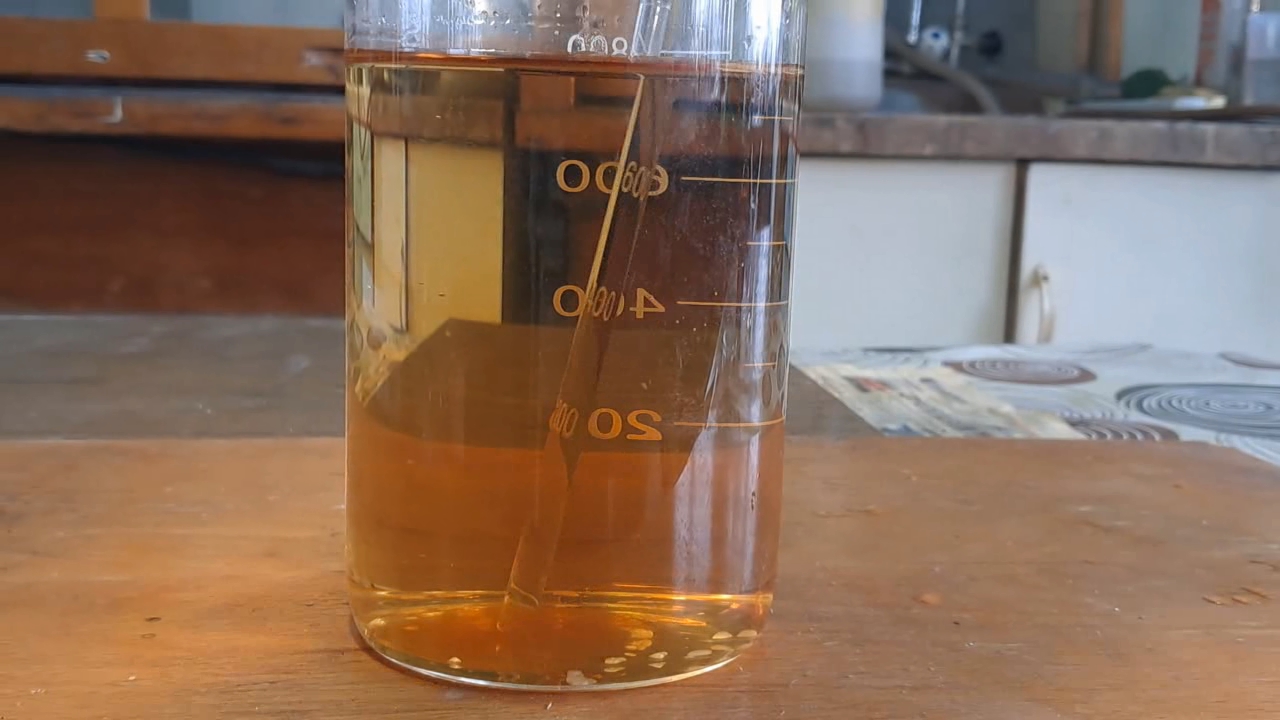
|
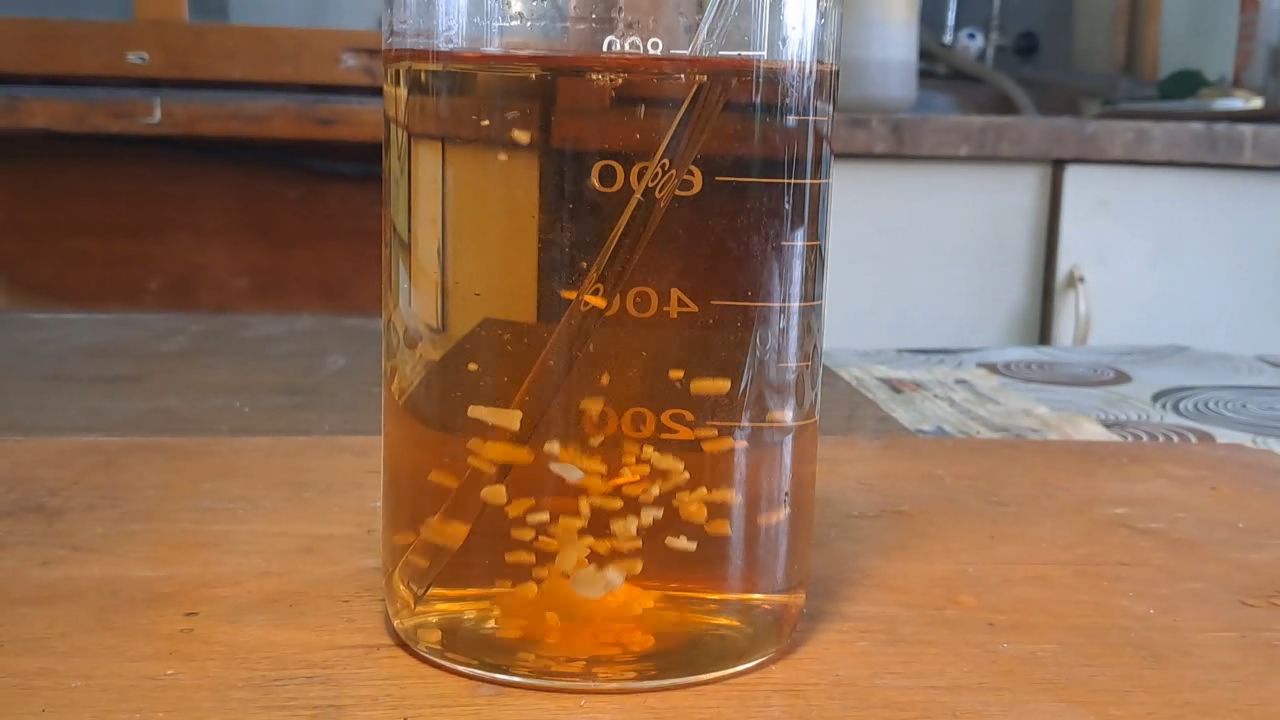
|
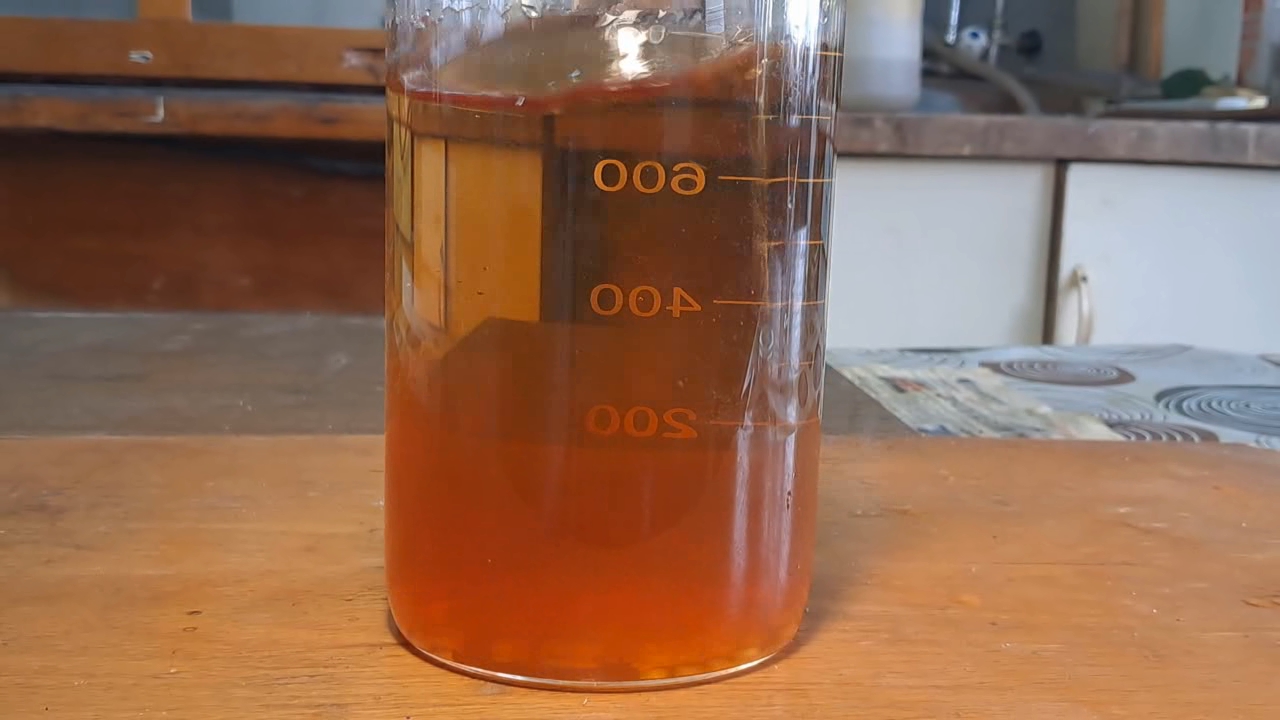
|
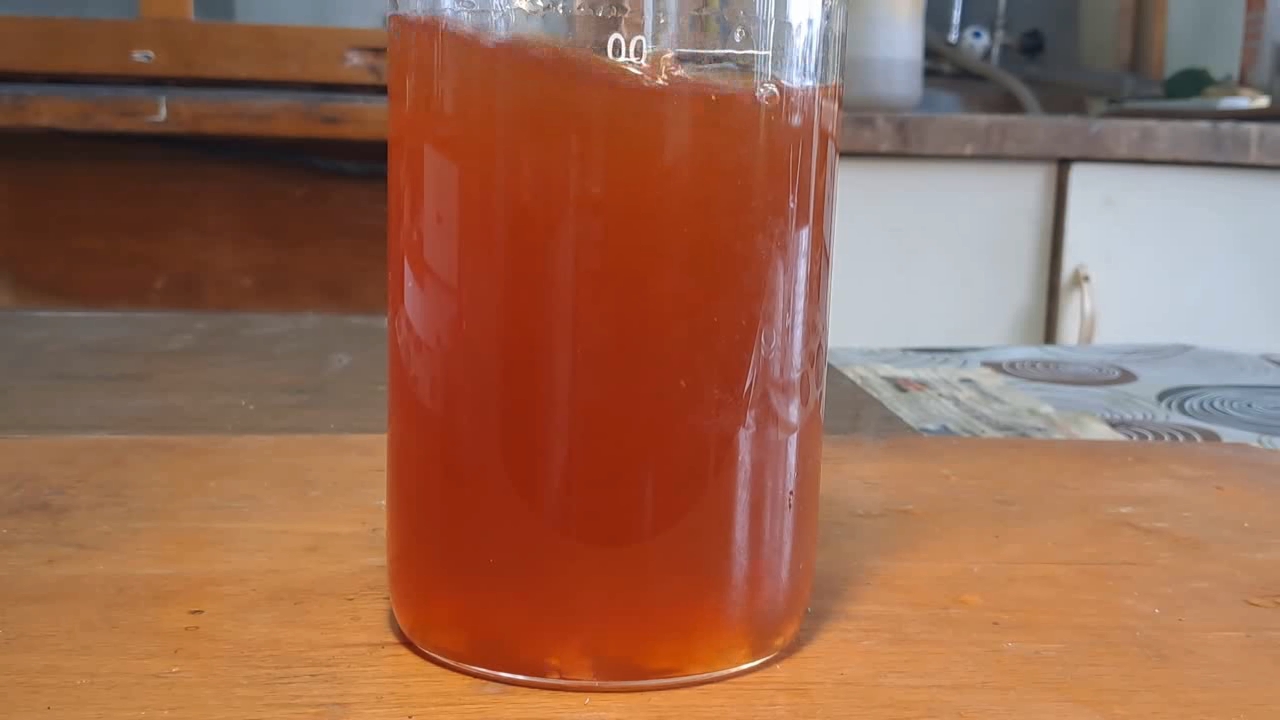
|
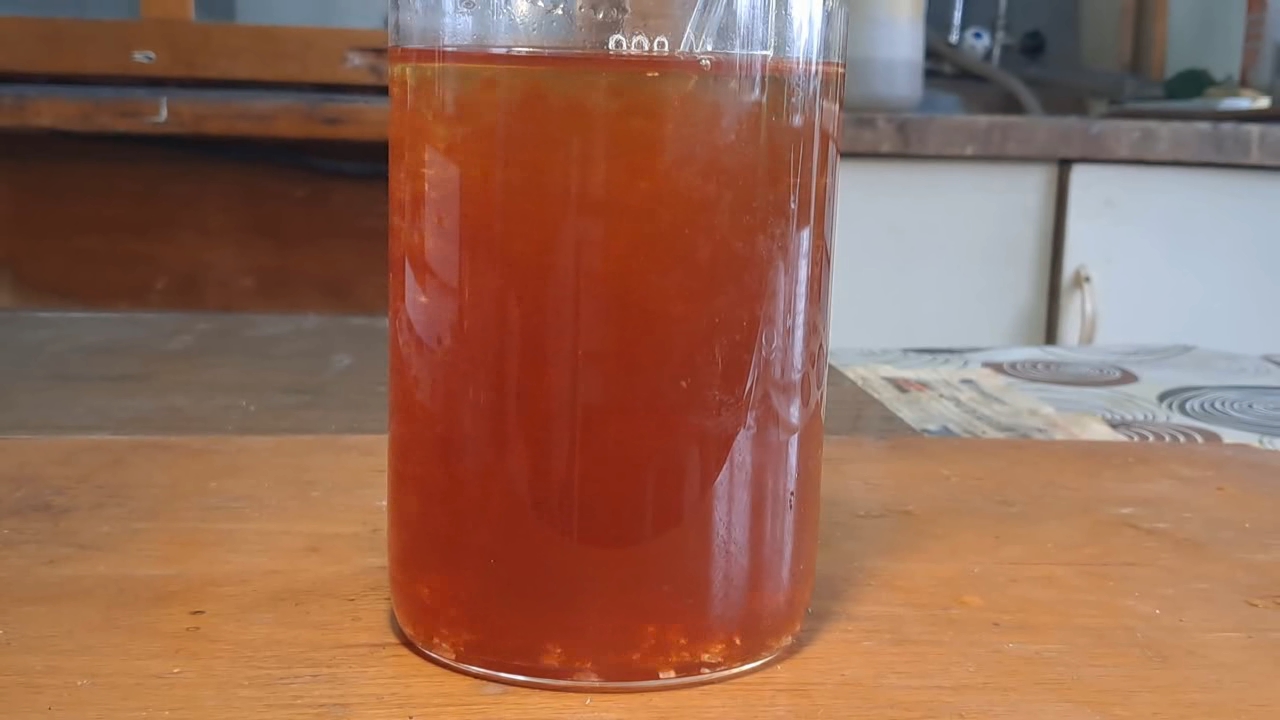
|
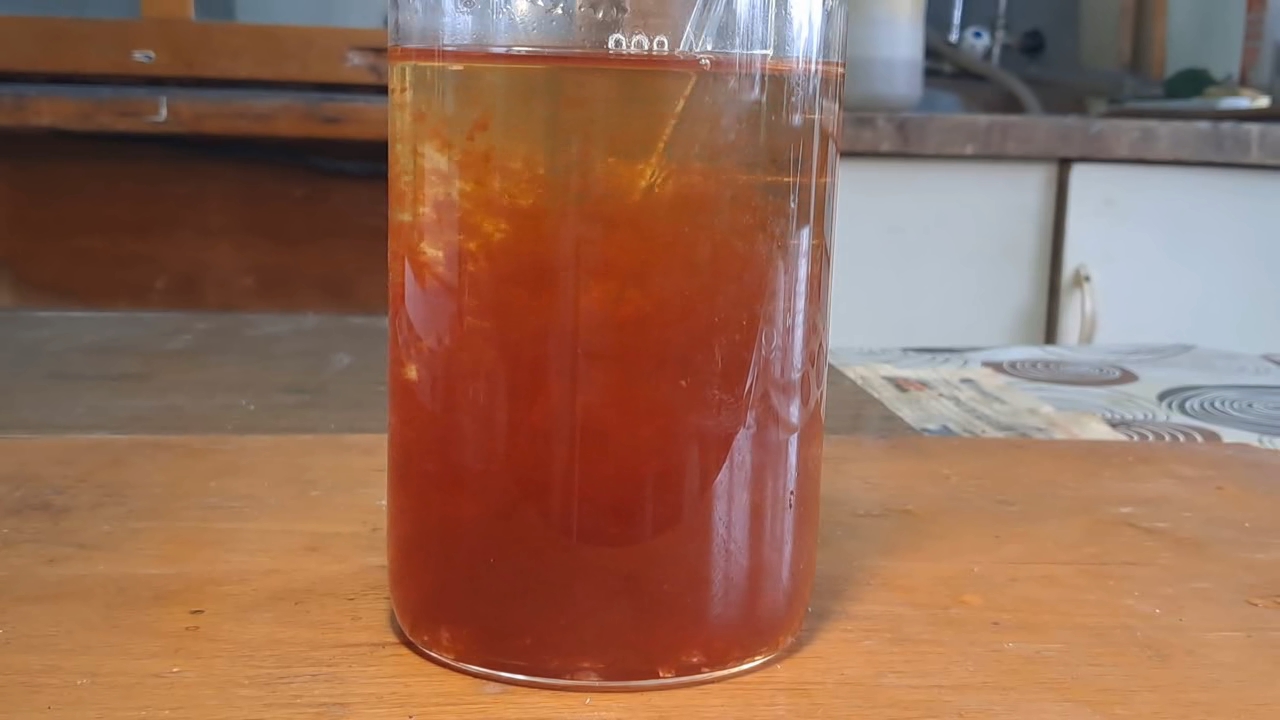
|
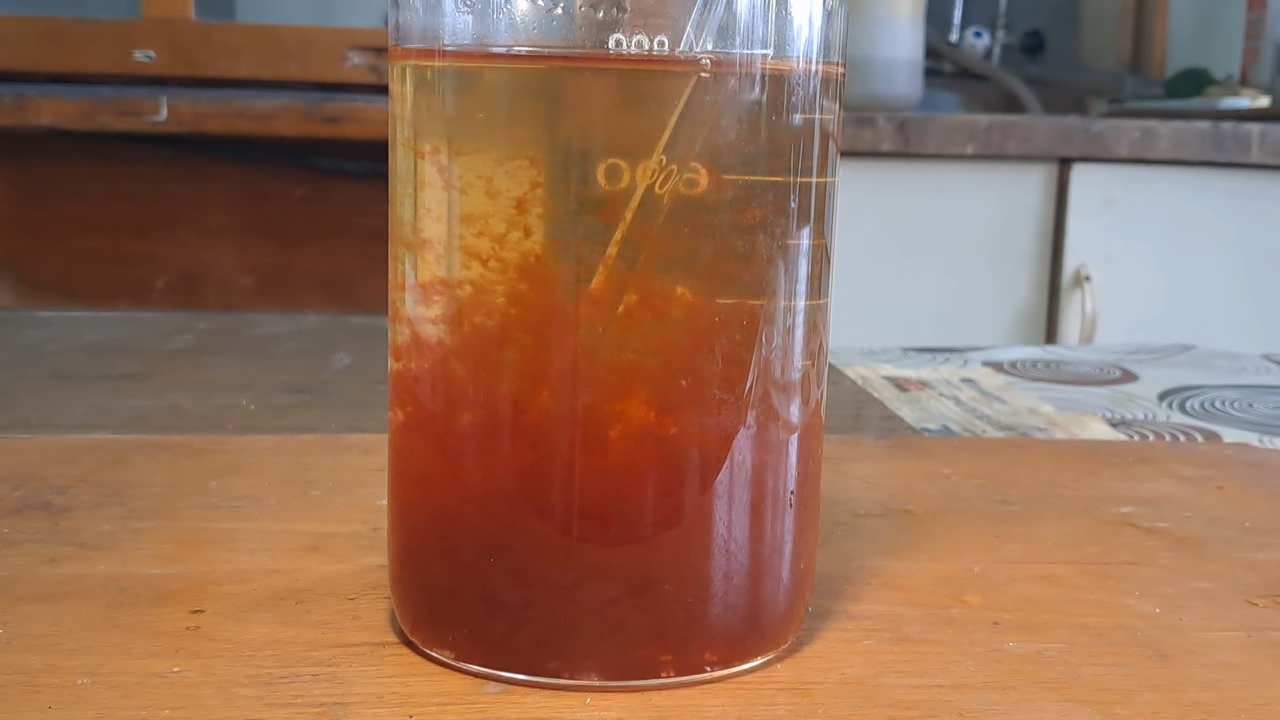
|
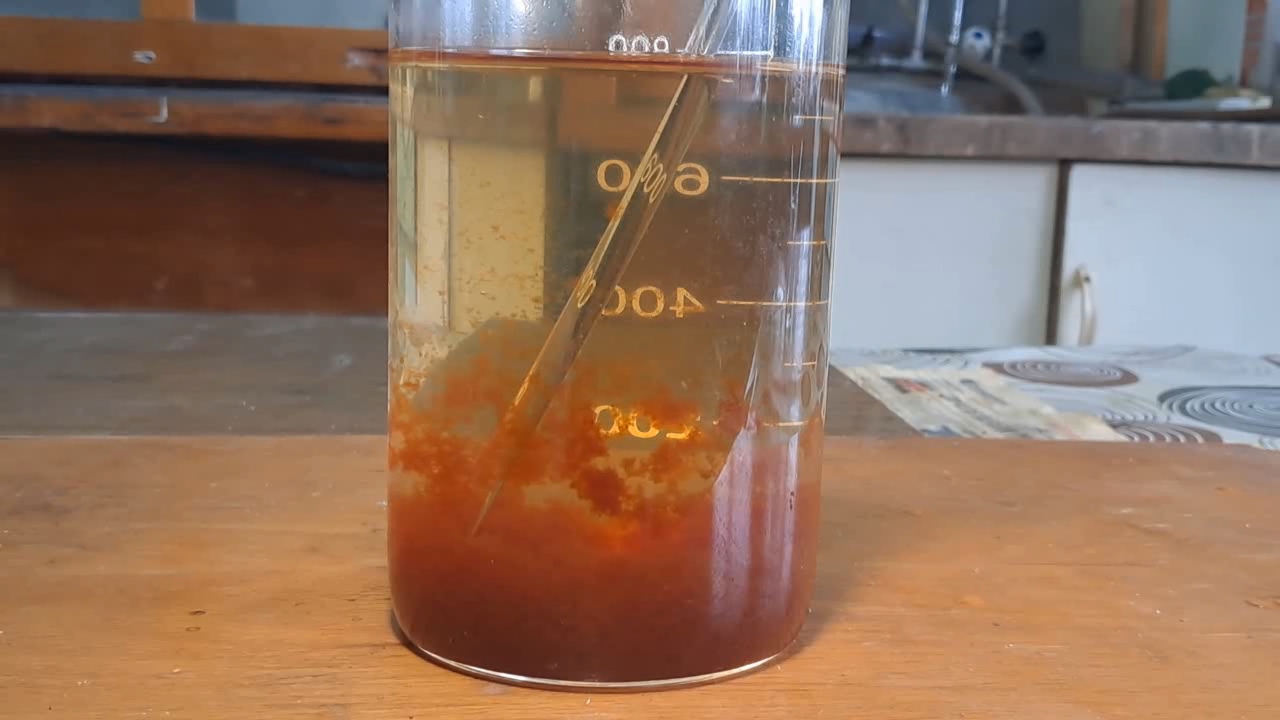
|
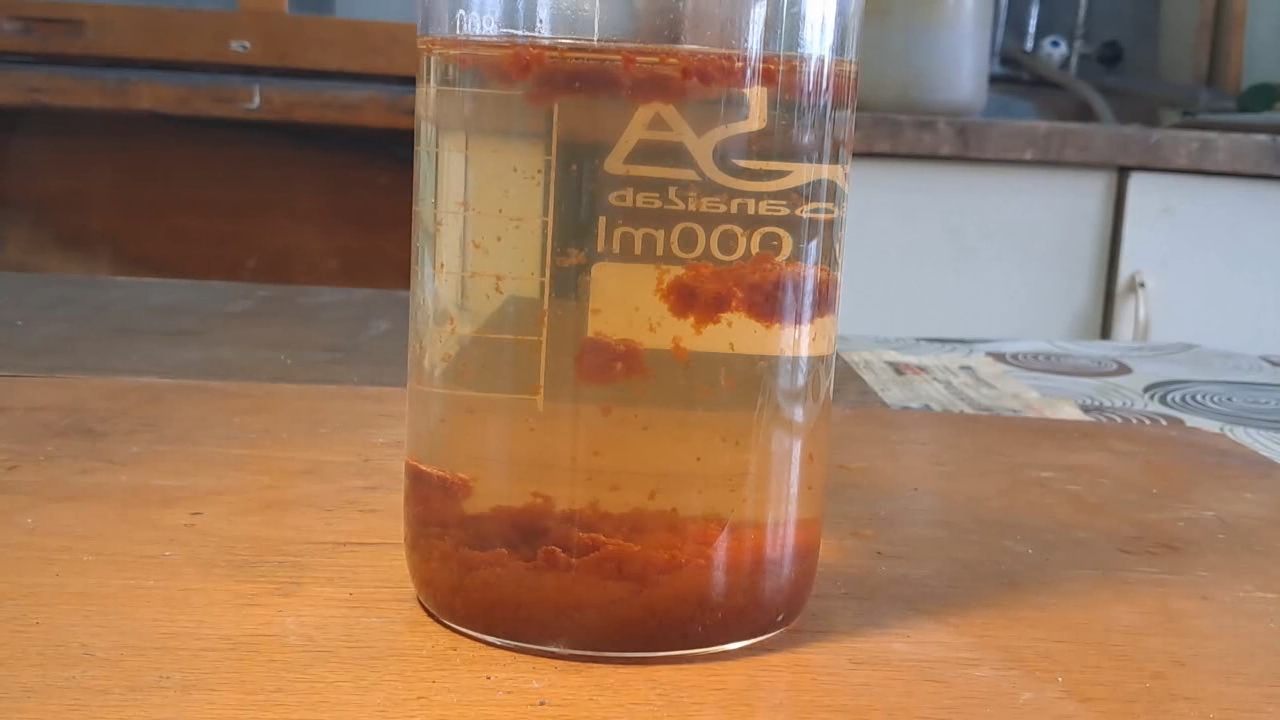
|
|
Having noticed a mistake in the text, allocate it and press Ctrl-Enter
Phenol-Iron Complex and Sodium Hydroxide - Part 5
The previous experiment worked, but I was not satisfied with the video quality - the background was too dark. I decided to repeat the reaction of phenol-iron complex formation to record a better video.
Комплекс фенола с железом и гидроксид натрия - Часть 5 After the previous experiment, I had rinsed the glass with tap water in a hurry. Some water remained on the walls of the glass, but I paid no attention to it. I poured in distilled water, added phenol, and stirred. Then I began adding an iron(III) chloride solution drop by drop. The solution turned purple, but the color had a distinct brown tint. The reason? There was still tap water in the glass. Apparently, even a small amount was enough to cause a brown tint. I washed the glass again, this time finishing with a rinse of distilled water, and repeated the experiment. Now, adding the iron(III) chloride solution produced a purple color without any brown tint. As more FeCl3 was added, the solution darkened to a deep purple, almost black. Finally, I added a few granules of sodium hydroxide and stirred. Gradually, the solution changed into a brown suspension. Shortly afterward, brown flakes formed and settled to the bottom. |
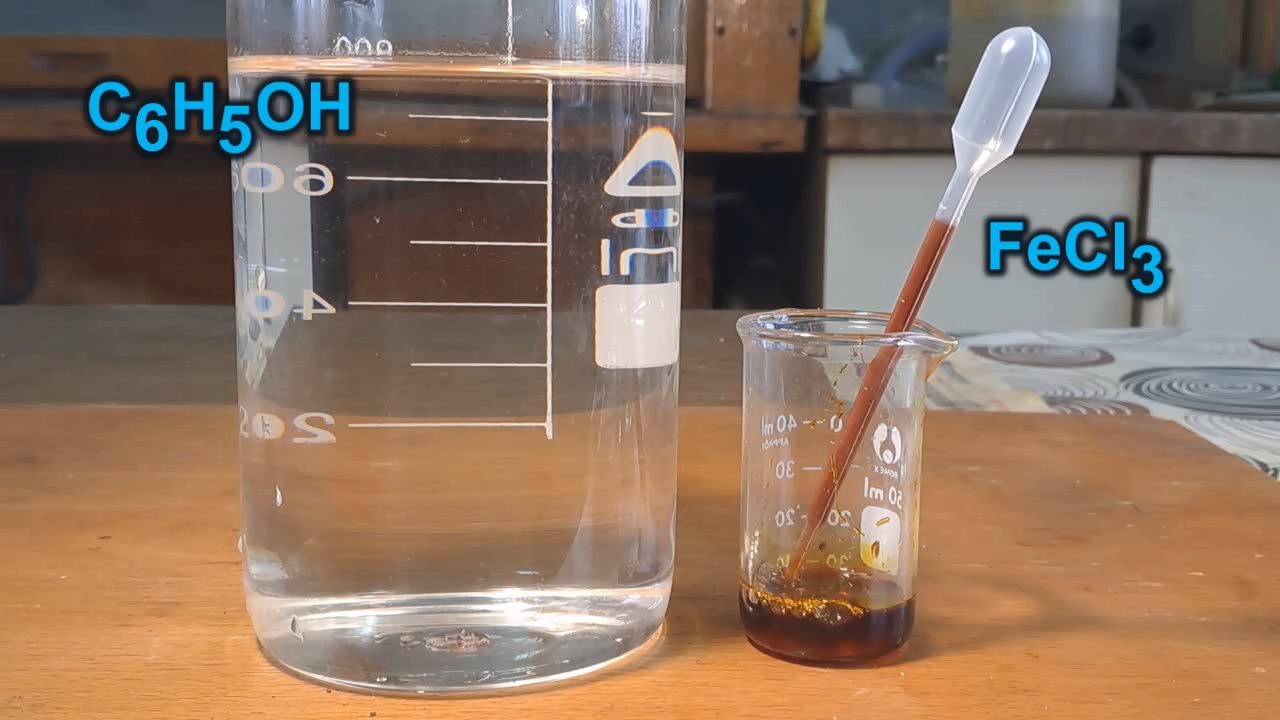
Phenol-Iron Complex and Sodium Hydroxide |
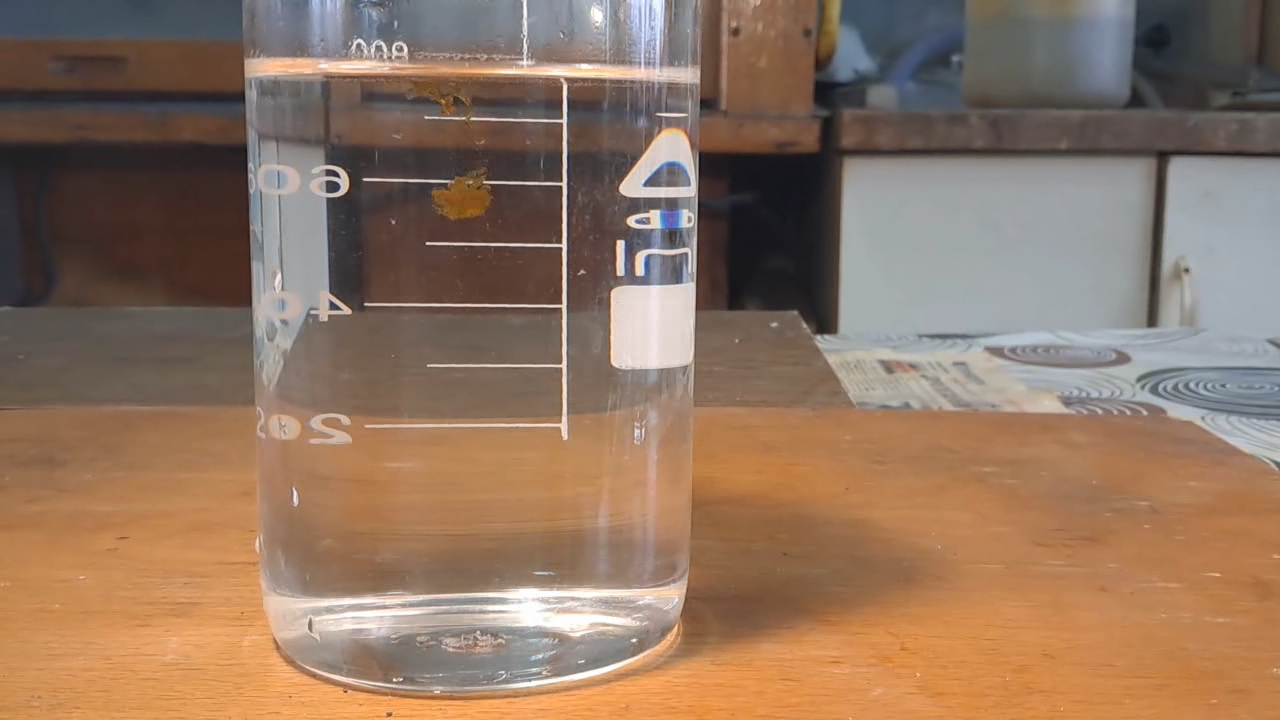
|
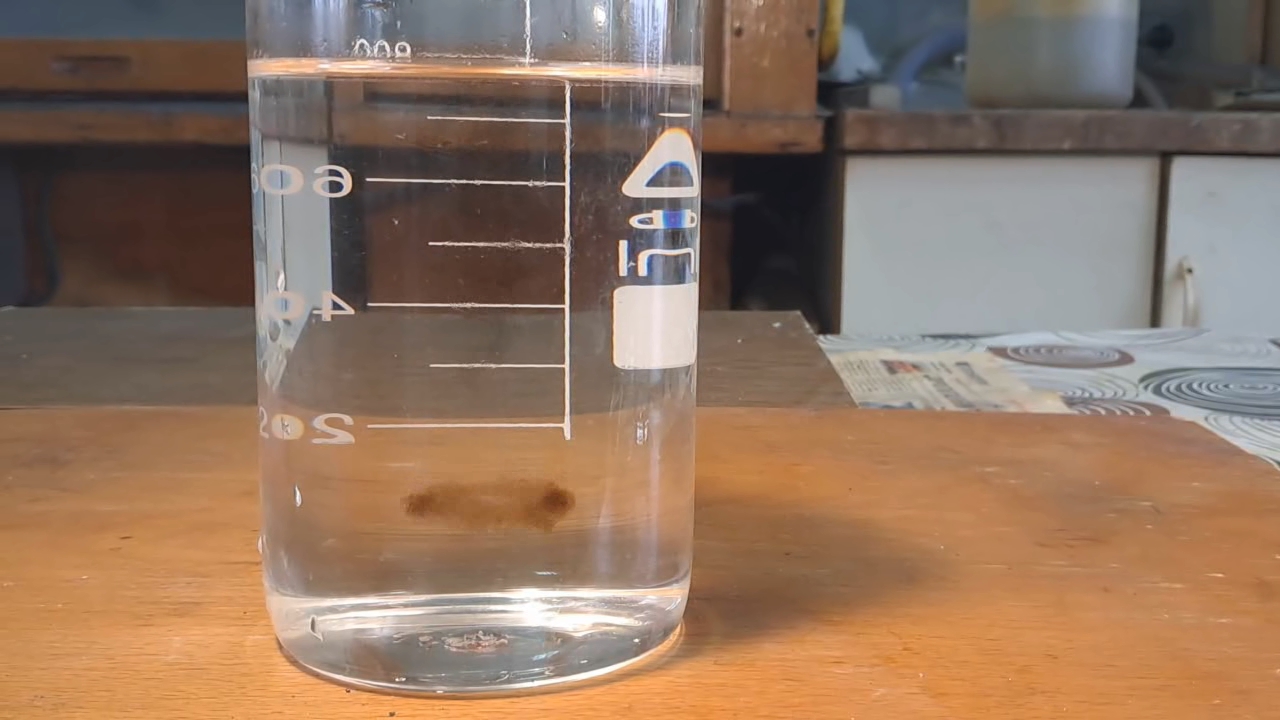
|
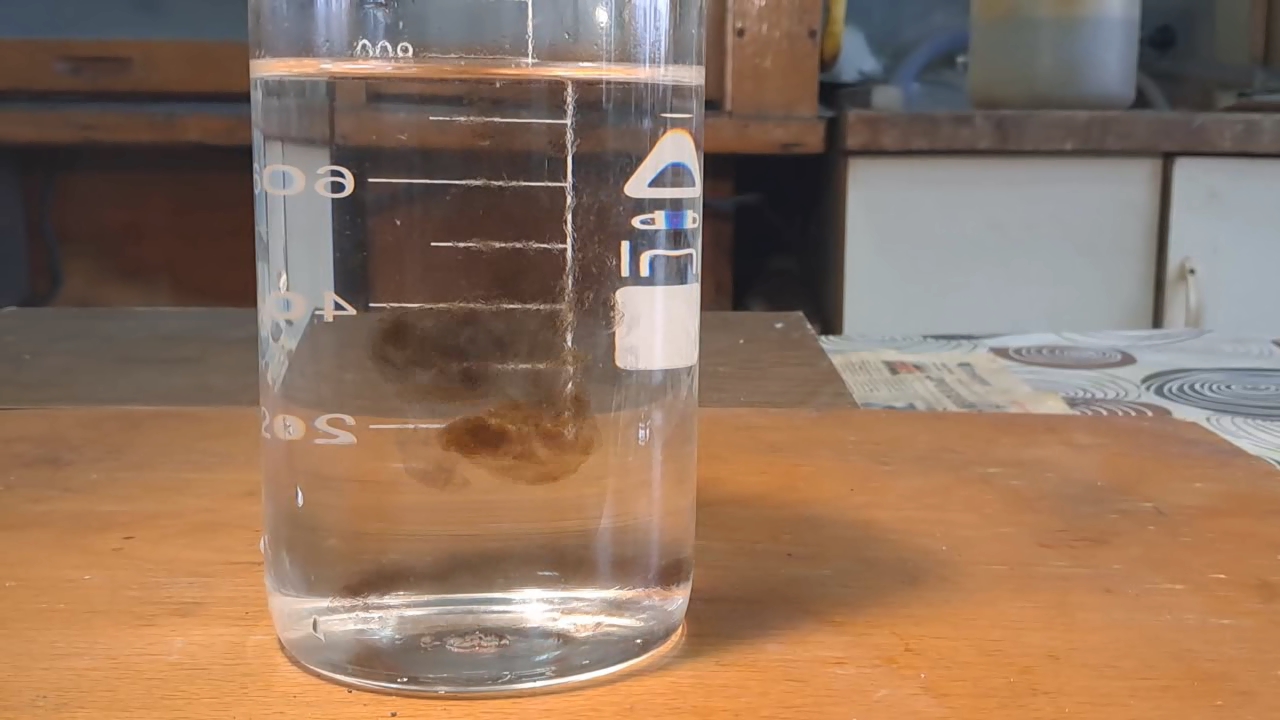
|
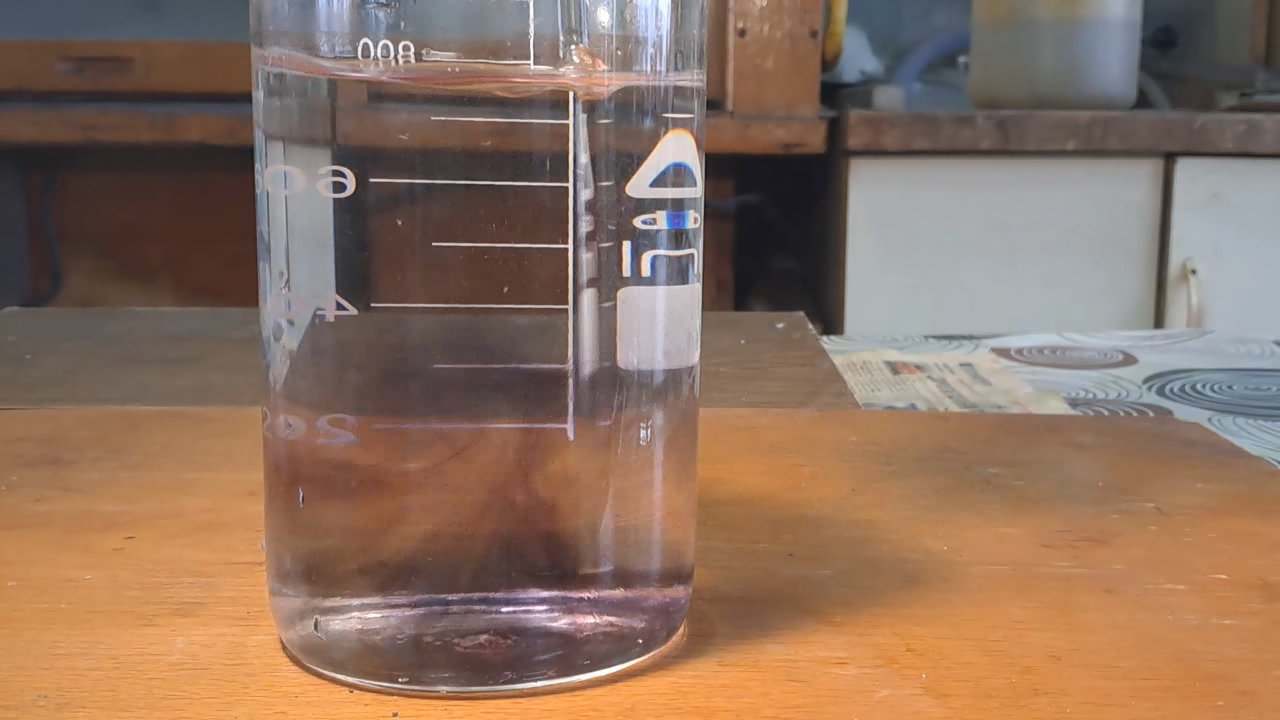
|
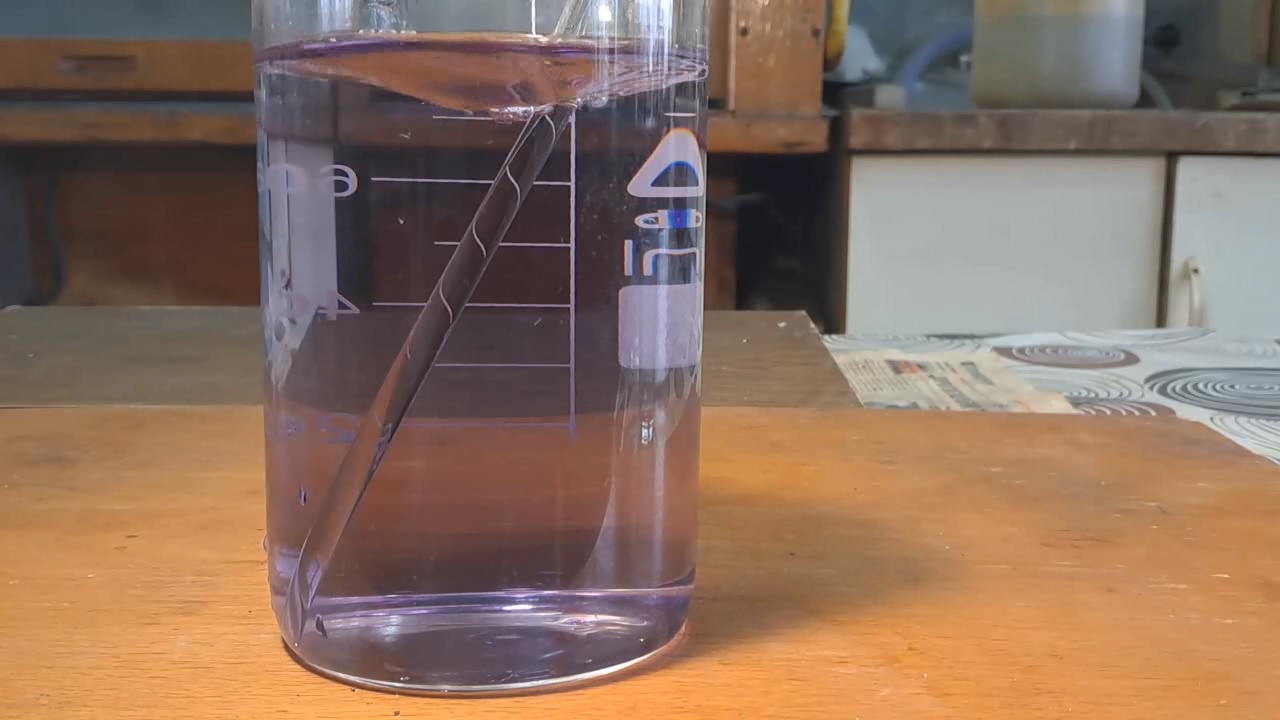
|
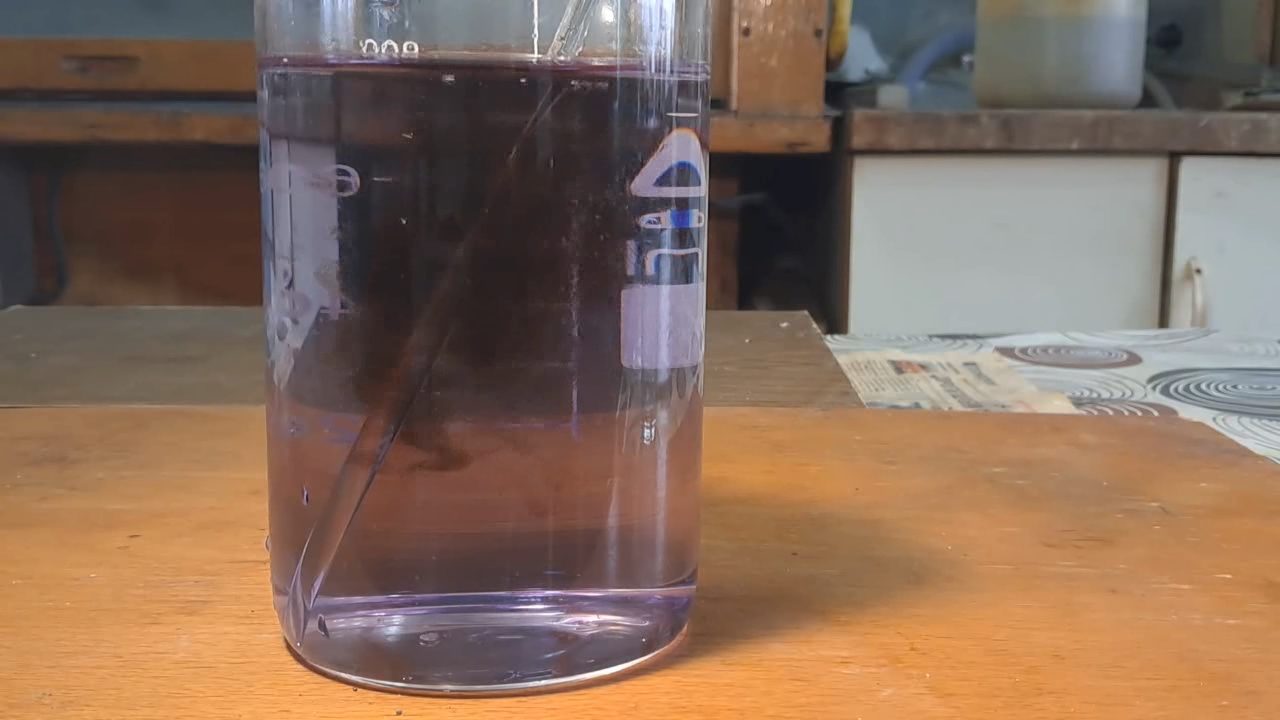
|
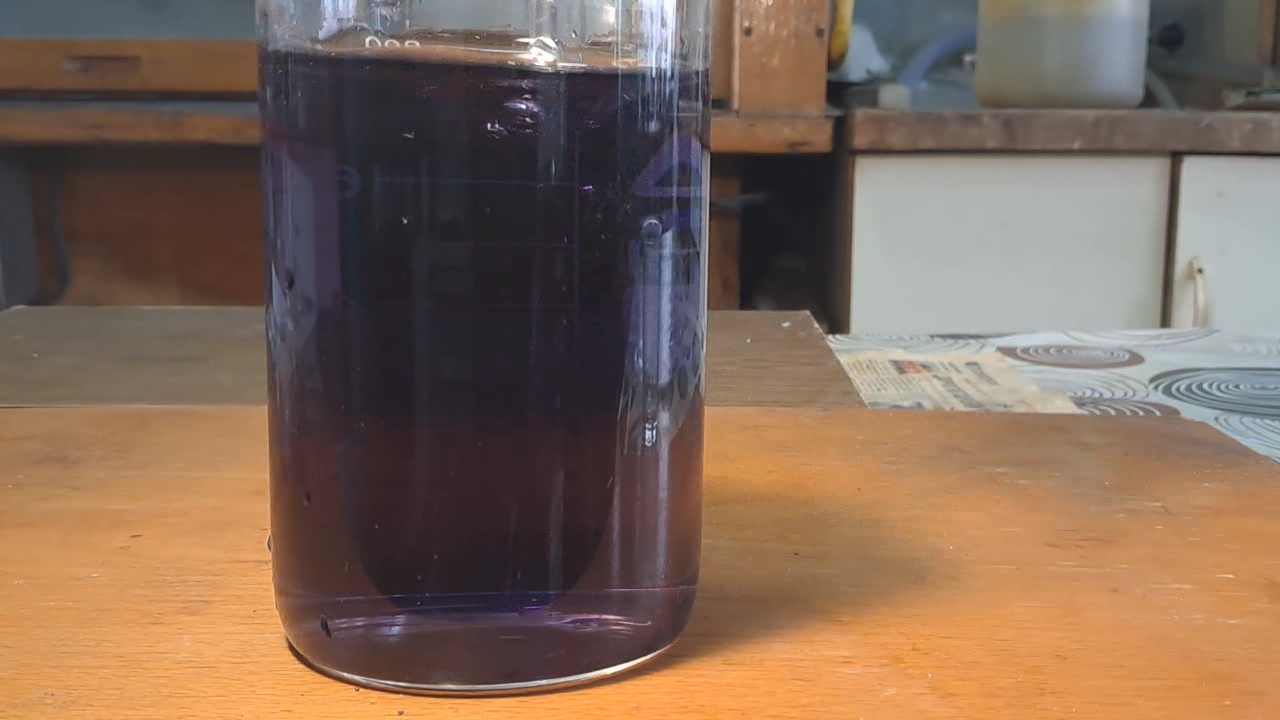
|
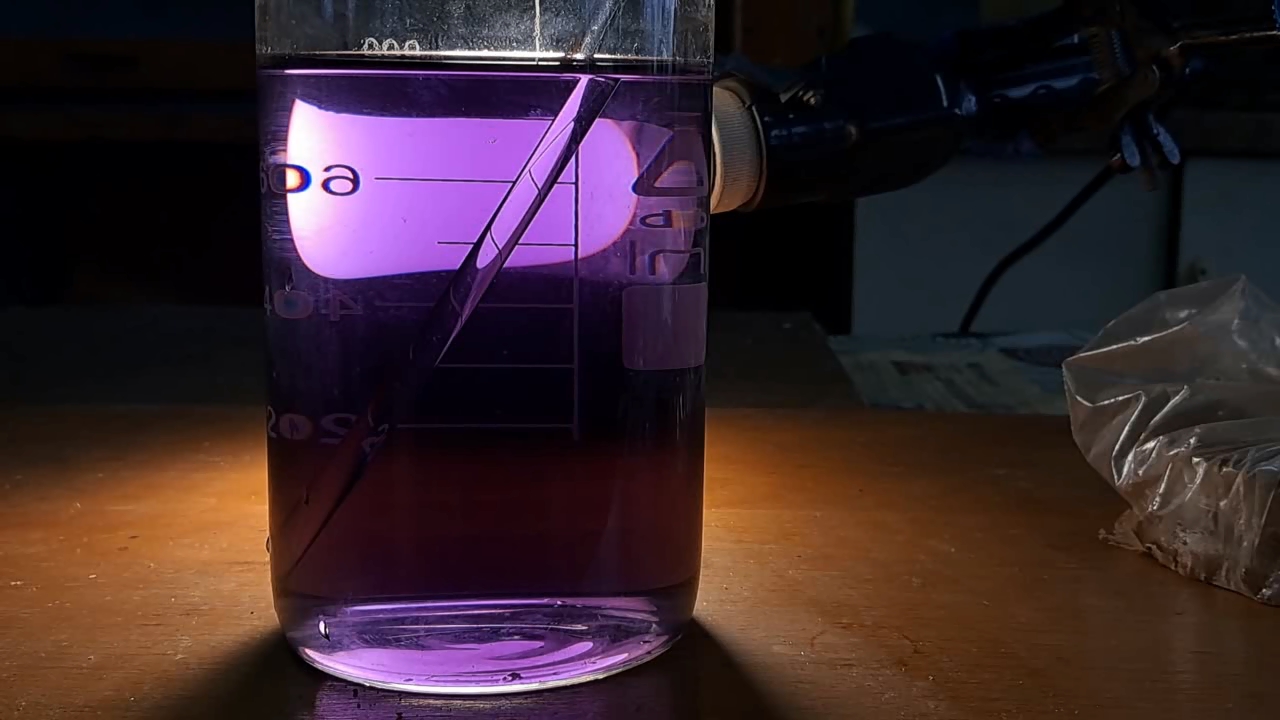
|
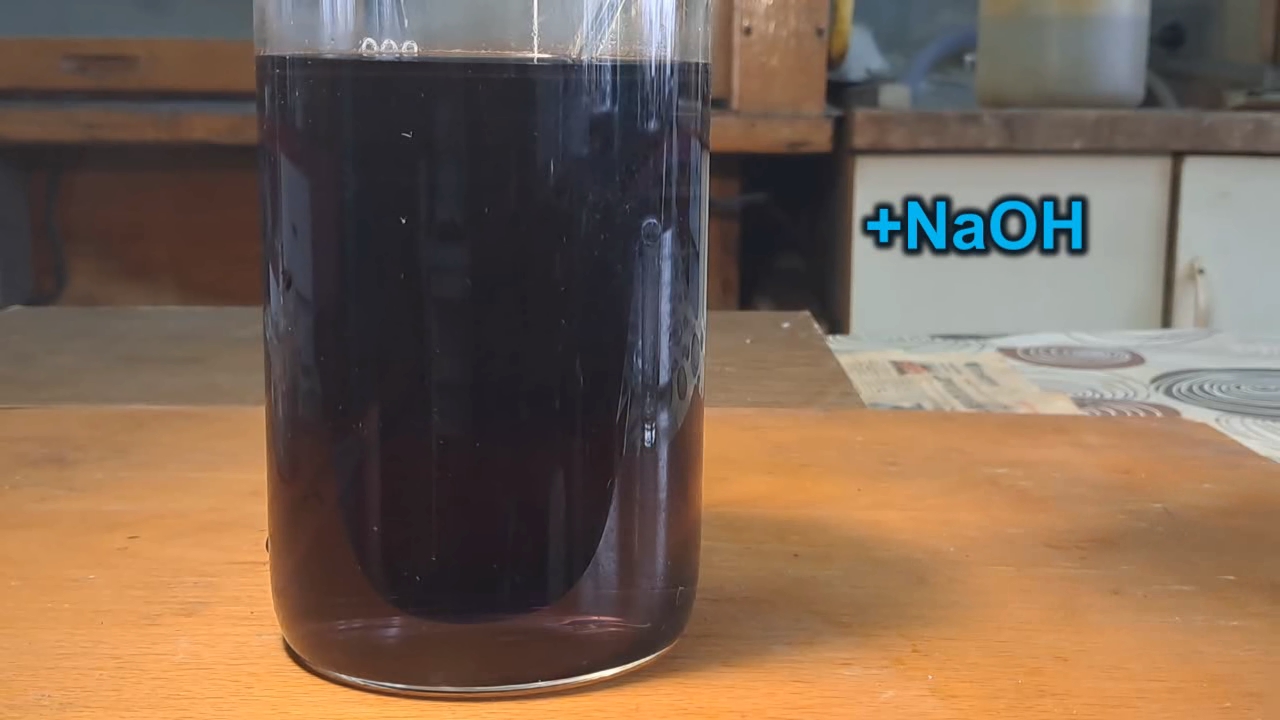
|
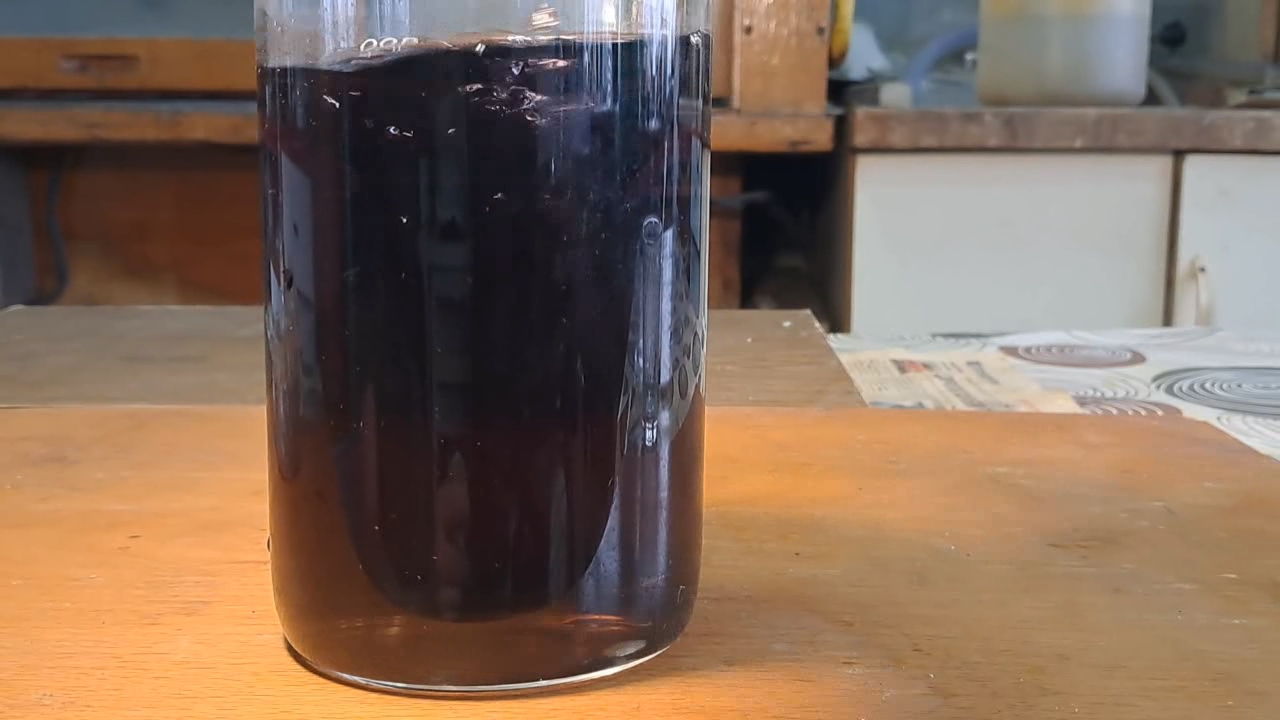
|
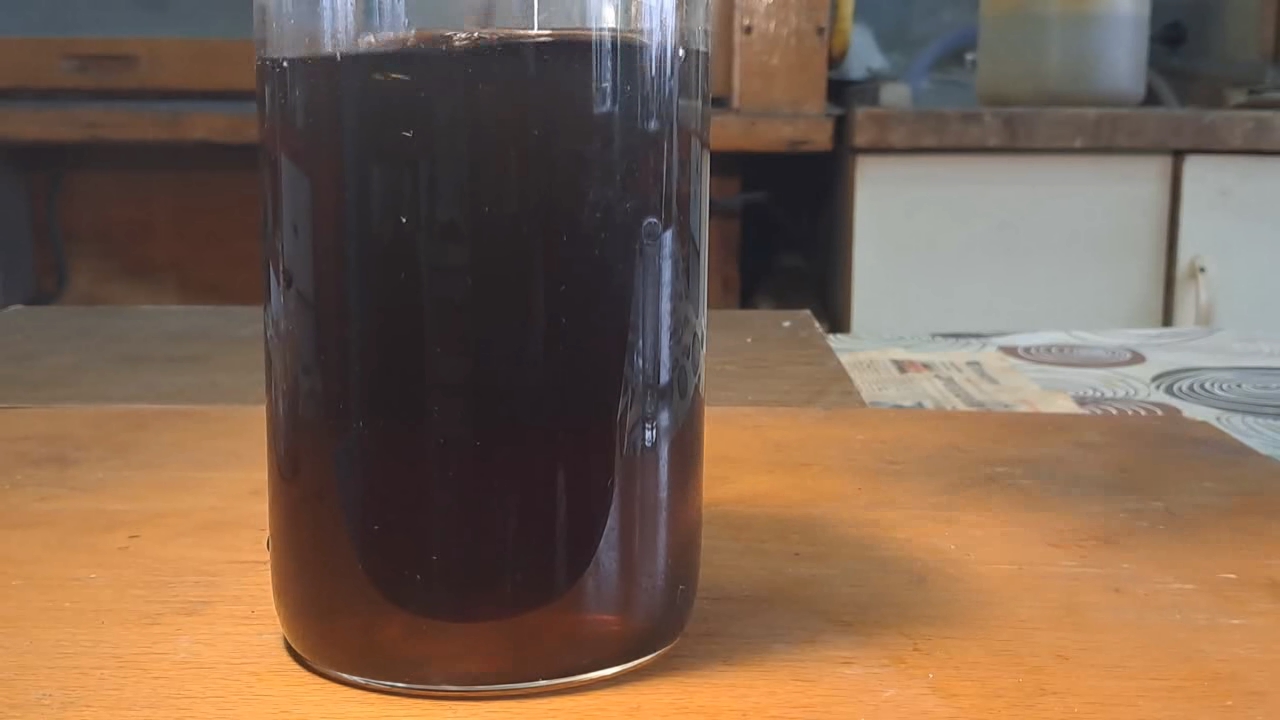
|
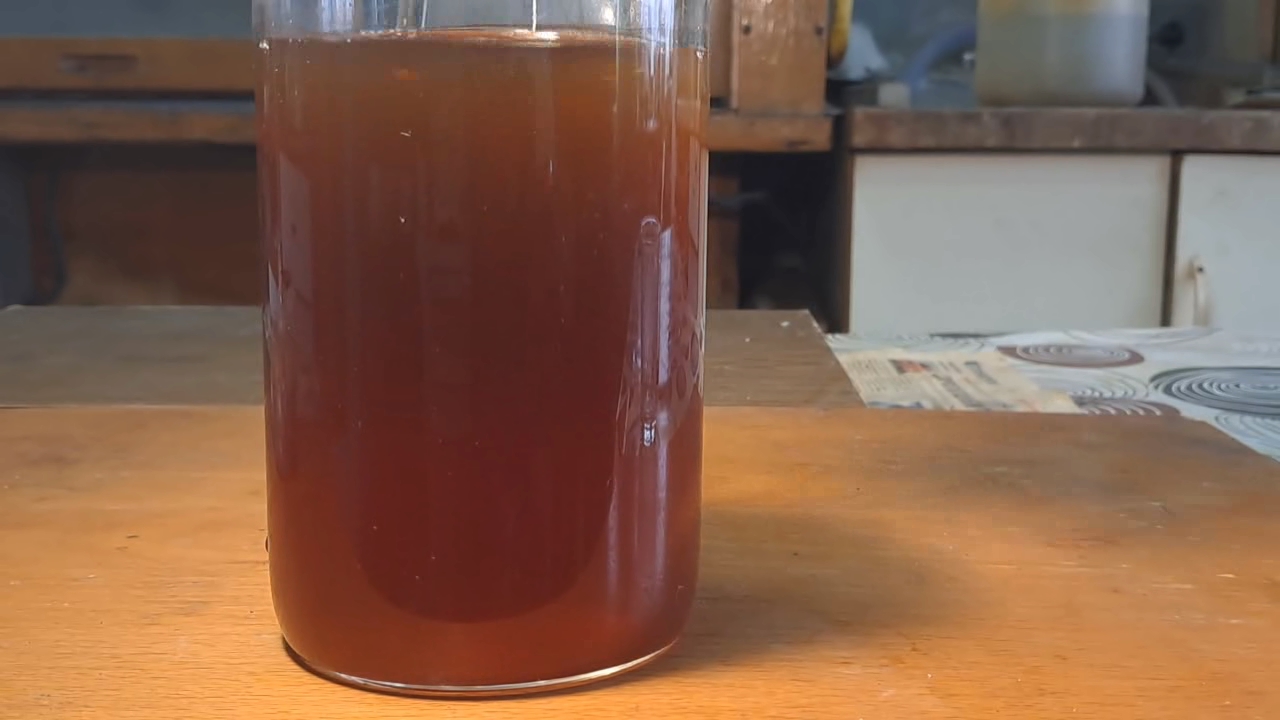
|
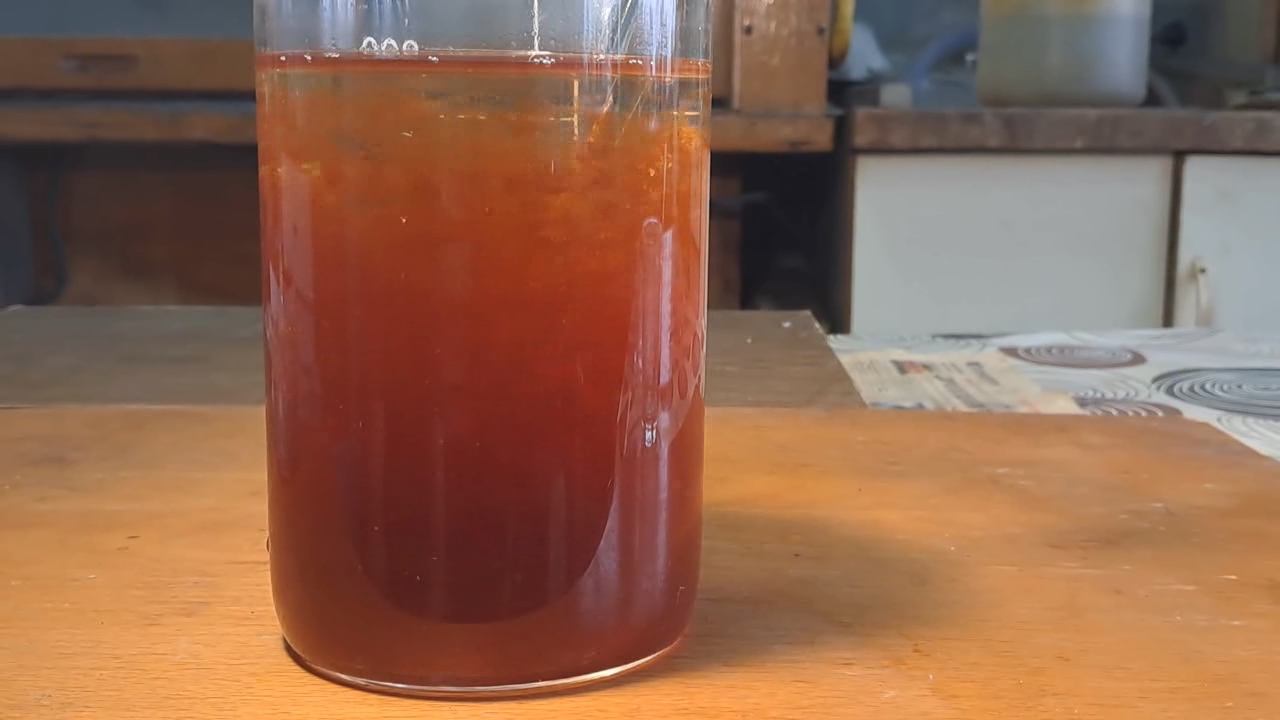
|
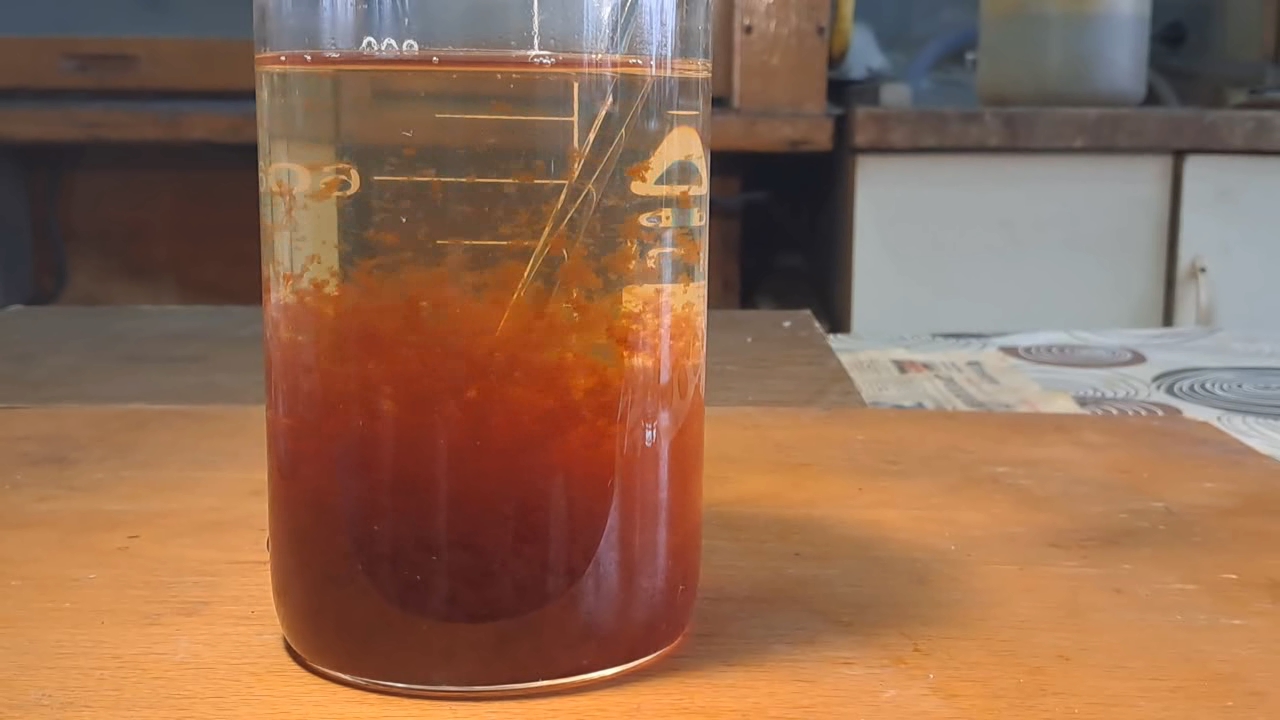
|
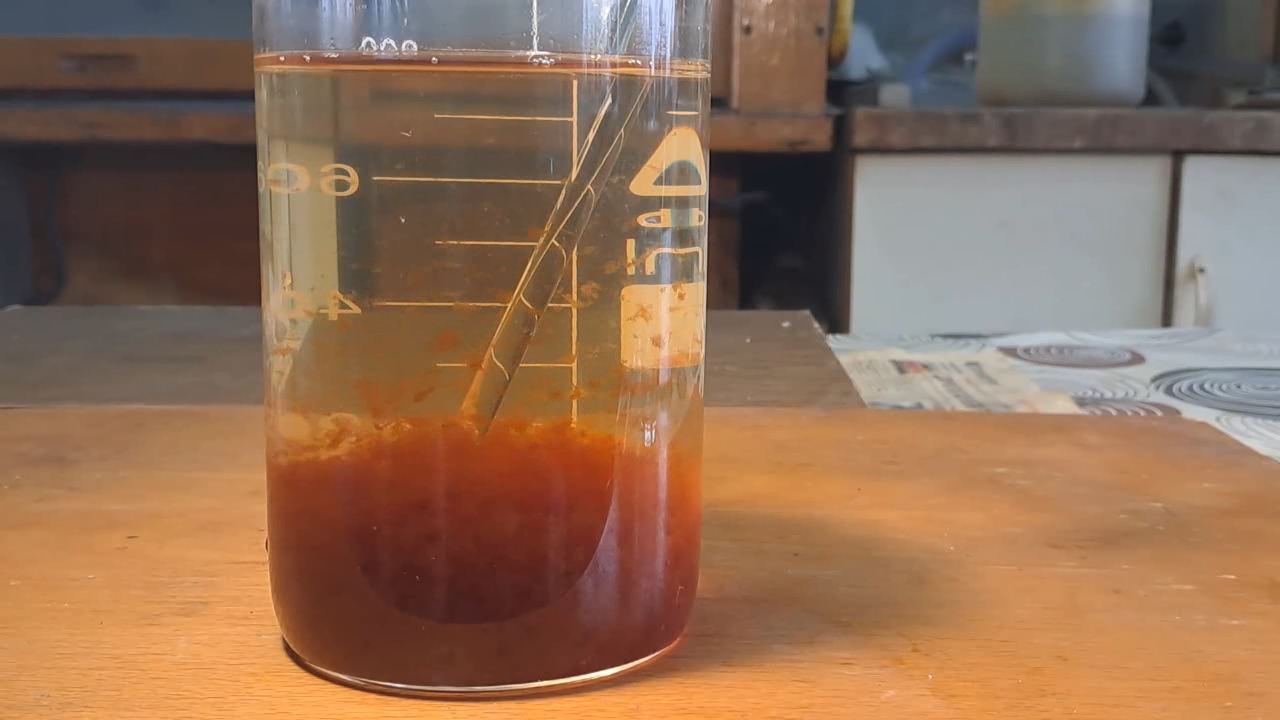
|
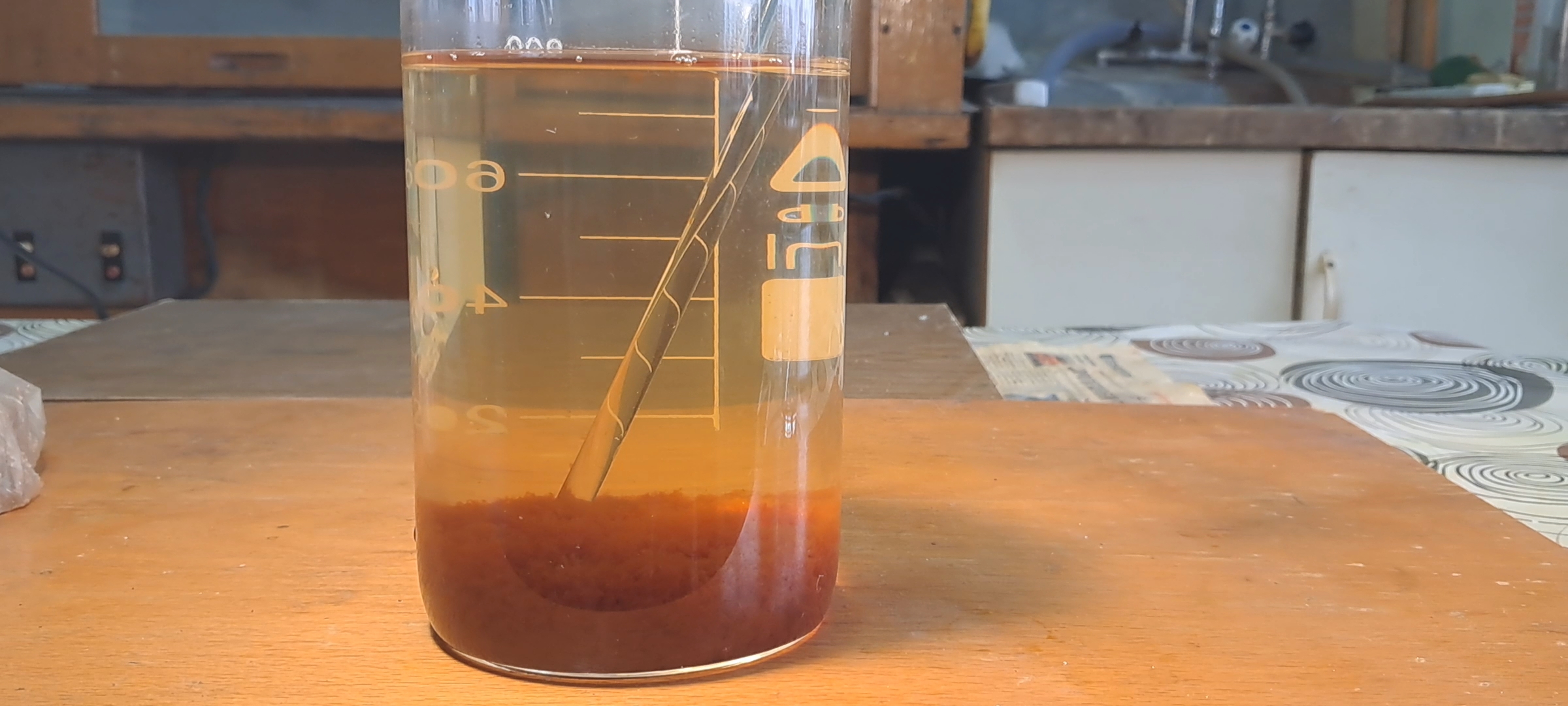
|